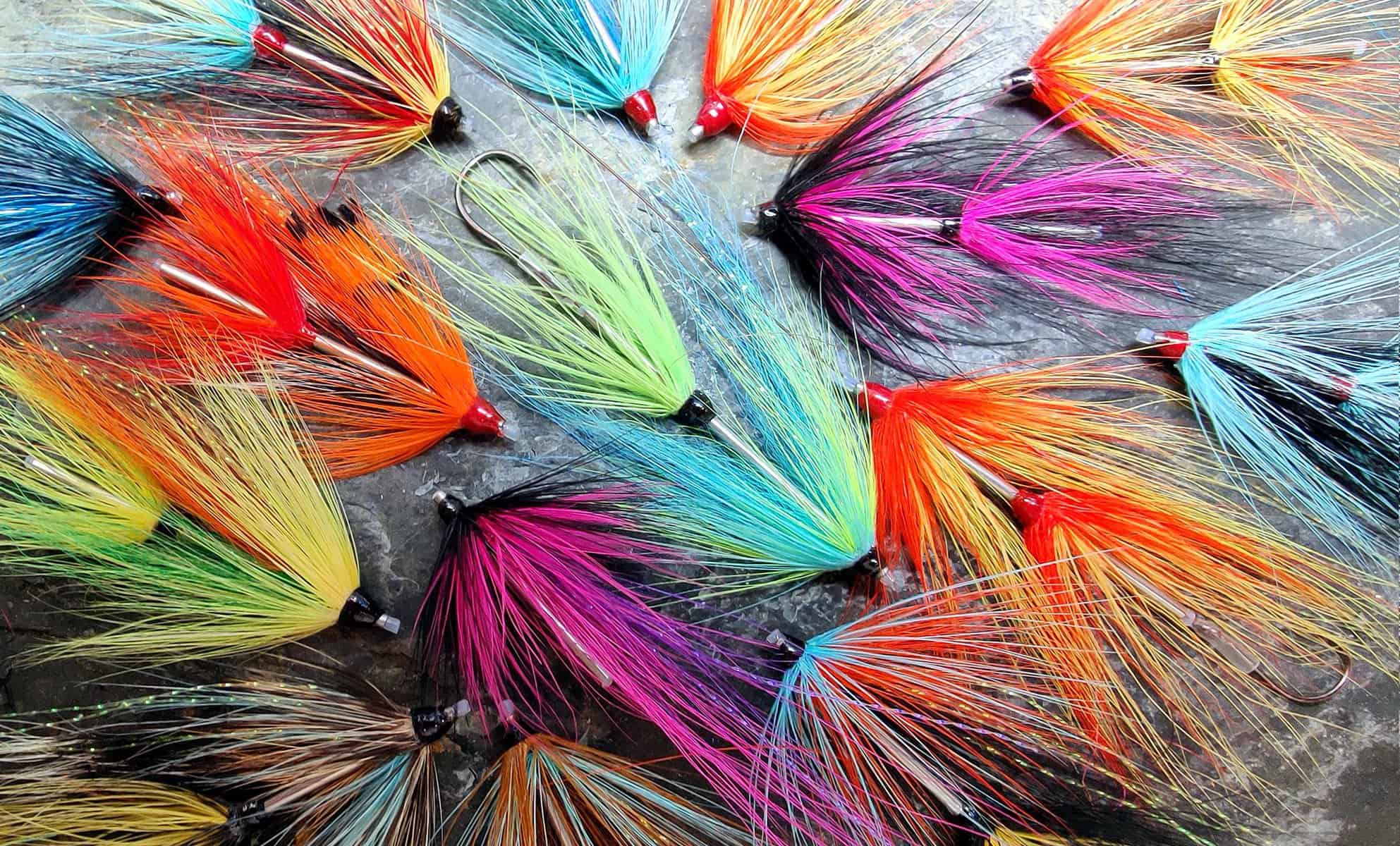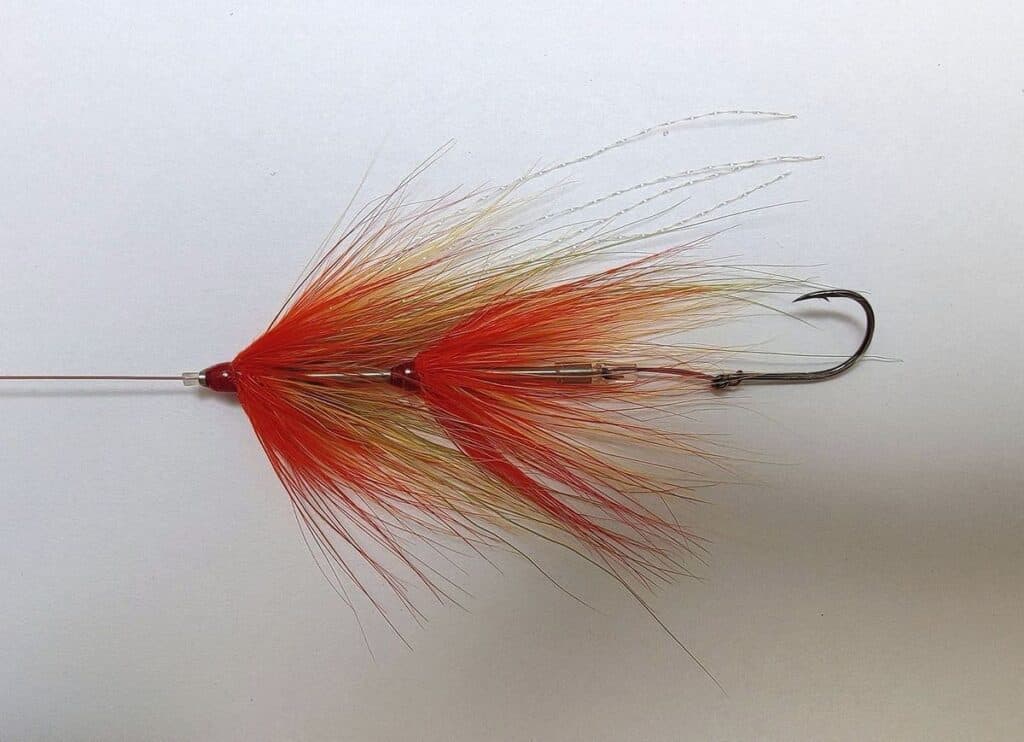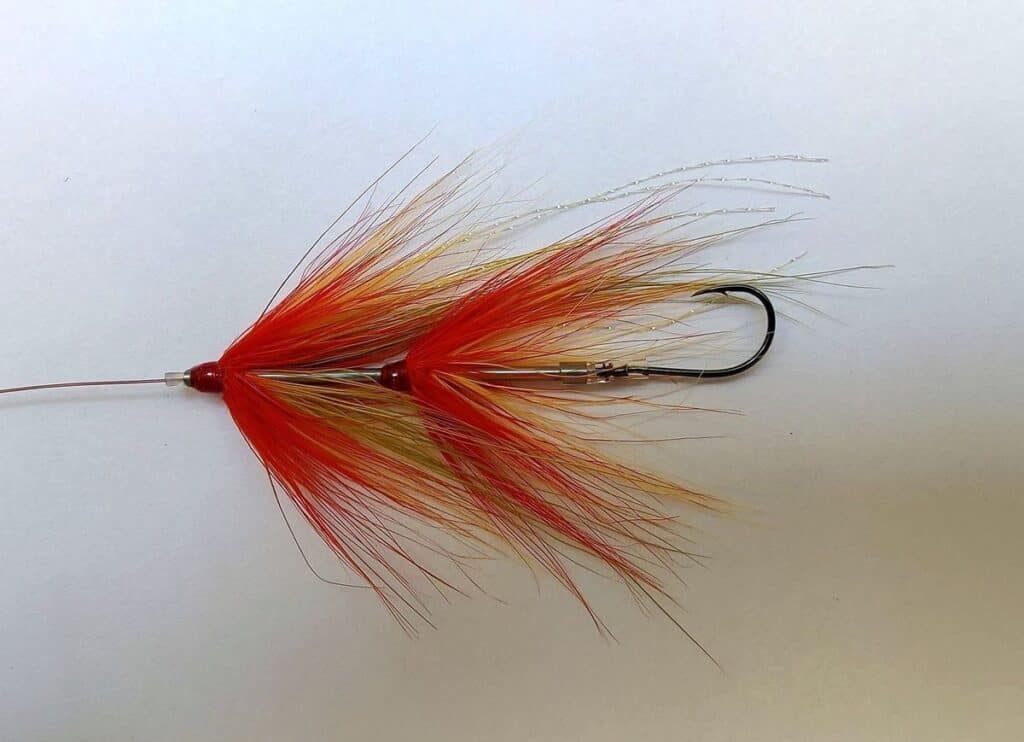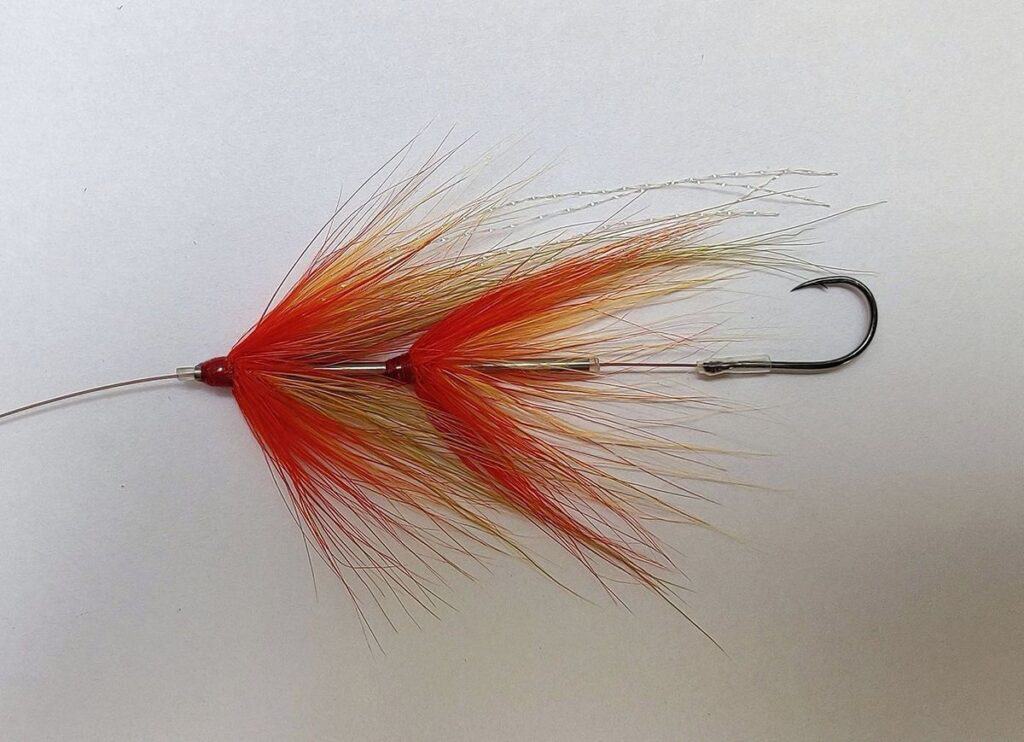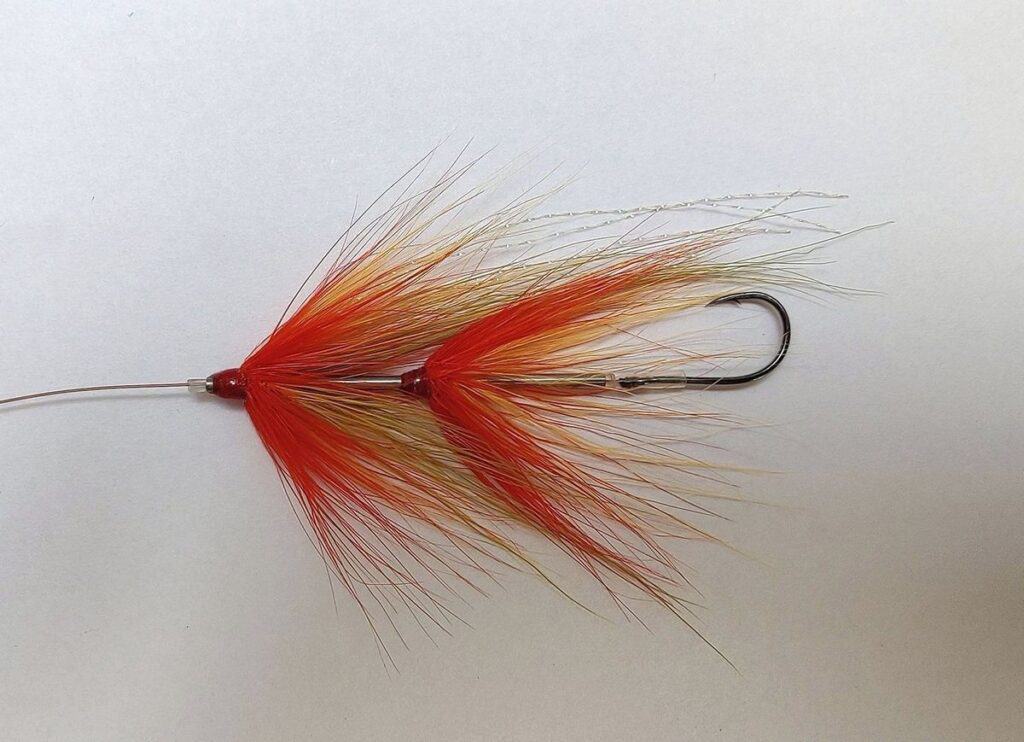Tying Intruder Style Tube Flies on Needle Tubes
The “Intruder” was developed in the early nineteen nineties by fly anglers on the Pacific west coast rivers of the United States and Canada, initially for Chinook or King salmon. They quickly found favour with rainbow trout and steelhead anglers. As the name suggests, the Intruder was a large offering designed to intrude on the territorial space of the salmon and provoke an aggressive response. The first Intruders were dressed on large streamer hooks, but the originators, seeking a more functional and more fish-friendly solution, found that they could make an even larger and lighter fly but attach a much smaller hook at the rear. Their solution was to dress the fly on a wire shank, perhaps a large hook with the bend cut off, and attach a smallish hook to the rear end by means of a loop of nylon or wire secured to the shank with thread and glue. Wire shanks of this type, and subsequently Waddington shanks, with a trailing hook linked behind as described, allowed a large, yet reasonably easily cast lure to be created and fished at a reasonable depth for deep lying fish. Today, such Intruder flies of varying weights may be fished at any required depth often with the aid of modern Skagit lines and MOW tips. A more recent development has been the tying of Intruder Tube Flies.
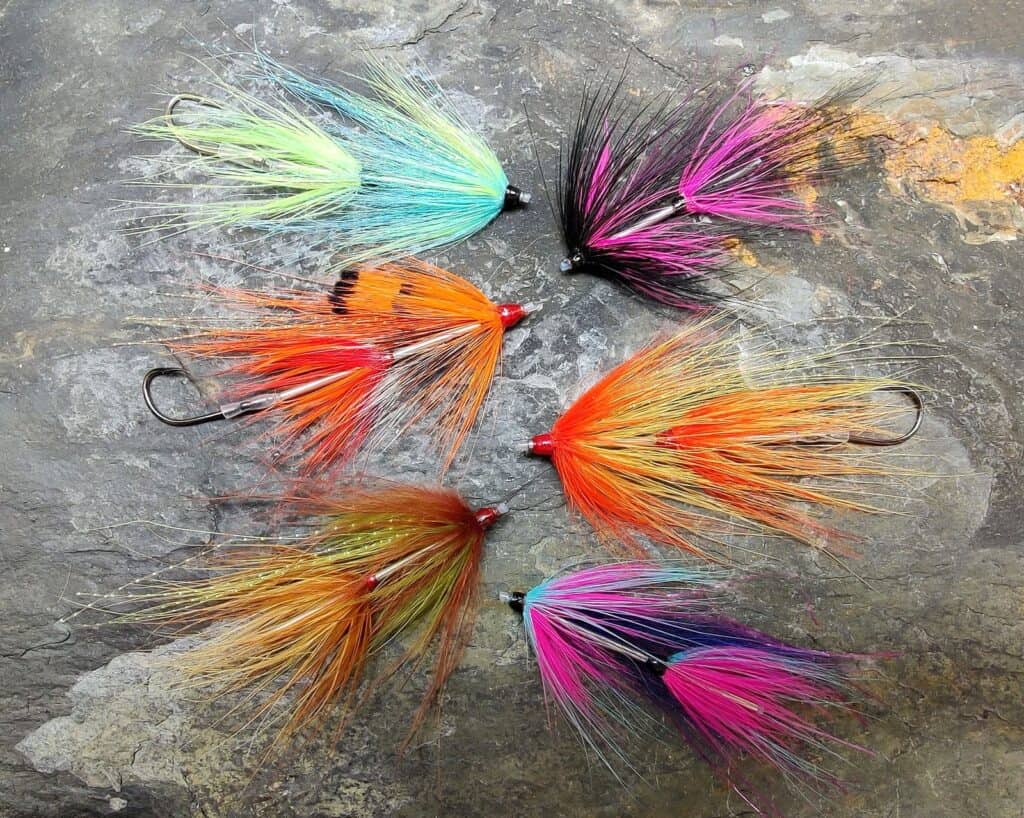
The Advantages of Needle Tubes for Intruder Flies
Intruders are now often dressed on tubes rather than wire shanks. After all, anything that can be tied on a wire shank can be tied on a tube. Tubes of various lengths, diameters and densities offer major advantages over flies dressed on wire shanks in that they are, in my experience at any rate, much easier to dress and, secondly, the hook is more easily fitted or changed when damaged or to suit changing circumstances. If the hook on the wire shank Intruder is attached via a nylon monofilament loop, it is not easy to get it to lie straight or at the right angle; a loop of soft braid may hang downward and may be prone to catching on the leader (see Intruder Flies) ; while a wire loop may kink. The wire shank dressing may be damaged by the salmon’s teeth. In contrast, when a fish is hooked on an Intruder dressed on a tube, the tube is likely to slide up the leader out of the way during play and the dressing less likely to be damaged, particularly if using a free-swinging hook. If the Intruder fly is dressed on a slim stainless steel Needle Tube, as below, the polished silver tube body may be left undressed, much simplifying the whole tying procedure, and the finished Needle Tube Intruder will be as slim as, or even slimmer than the shank version and of similar weight.
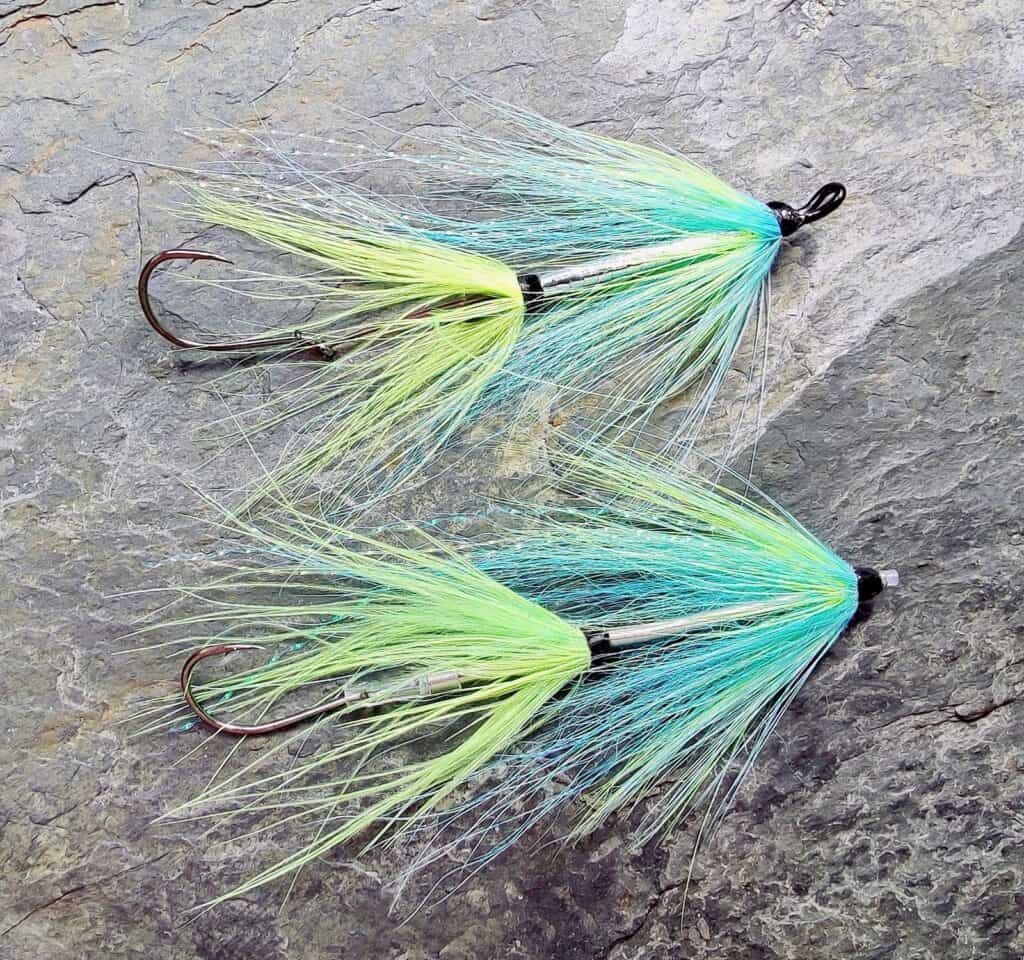
The top Intruder fly above is dressed on a 35mm Waddington Shank, the bottom one on a 40mm Needle Tube (Outside Diameter 1.5mm). The weight of the Waddington lure is 0.6 grams. The weight of the Needle Tube Intruder is 0.5 grams. (If the Needle Intruder fly above was dressed on a 1.8mm diameter needle tube 35mm long, it would weigh 0.7 grams). As the flies have a similar profile, weight and density, they would fish at similar depths. Both are fairly simple flies dressed for illustration. The Waddington took me twice as long to make!
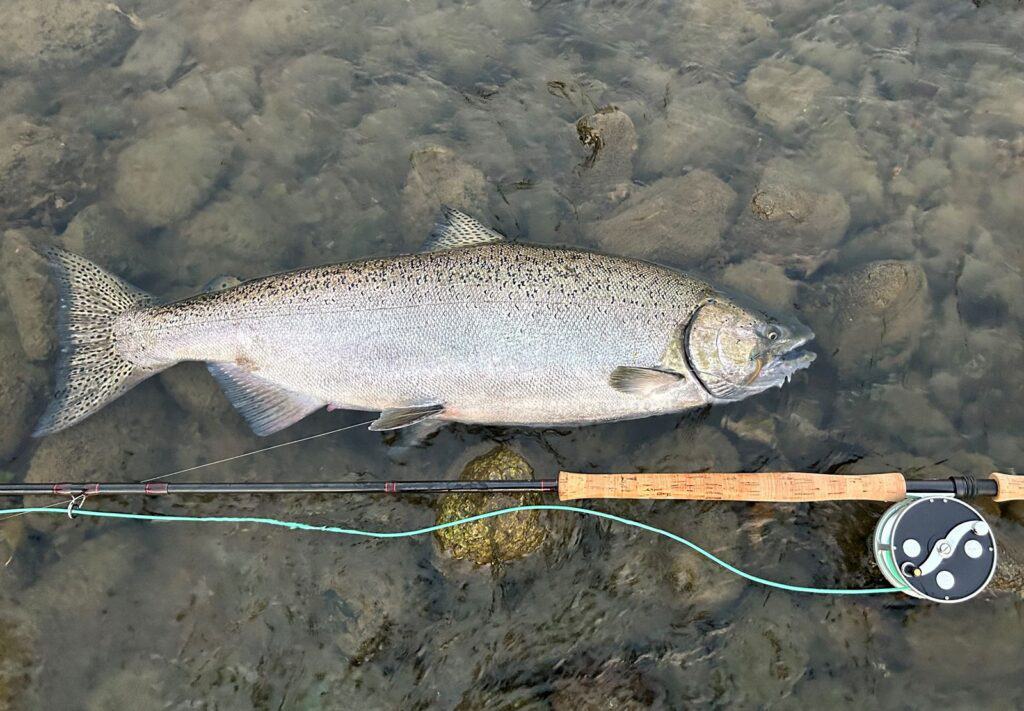
See Campbell River Chinook Salmon
Intruder Needle Tube Flies
Needle Tubes, ultra slim stainless steel tubes developed by Grays of Kilsyth in Scotland and introduced in 2008, are I think pretty much ideal for dressing this style of Intruder Tube Fly. They are as slim as, and about the same weight as a Waddington shank, and are available in lengths ranging from 10mm to 40mm. NOTE: As stated above, an intruder tube fly dressed on a needle tube of 1.5mm diameter would be marginally lighter than an Intruder dressed on a standard Waddington shank of the same length; an intruder tube fly dressed on a needle tube of 1.8mm diameter would be marginally heavier than an Intruder dressed on a Waddington shank of the same length. All have similar densities and, given similar dressings, will sink at a similar rate to a similar depth. A further benefit of the needle tubes is that they require no body dressing over the slim shiny stainless steel body, although many tyers will prefer to add a body dressing or some mobile fibres at the rear of the tube to enhance the action of the fly. In addition to the ease of tying a fly on a Needle Tube, the hook is much more easily and quickly fitted or changed than the hook on a Waddington or other wire shank fly.
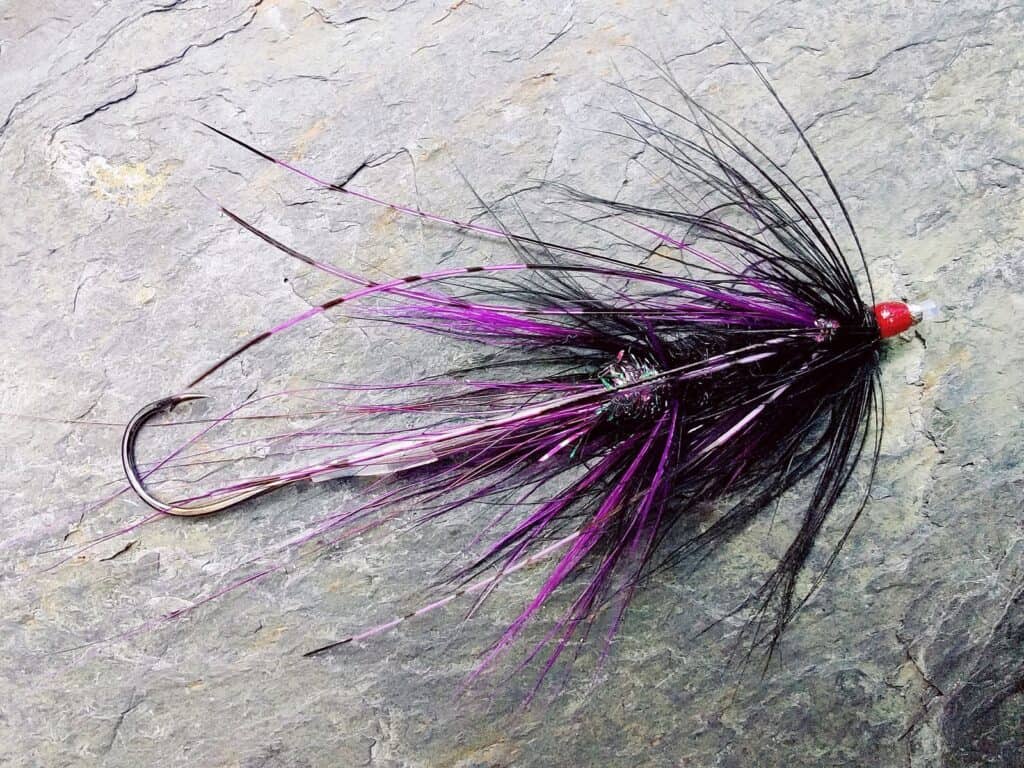
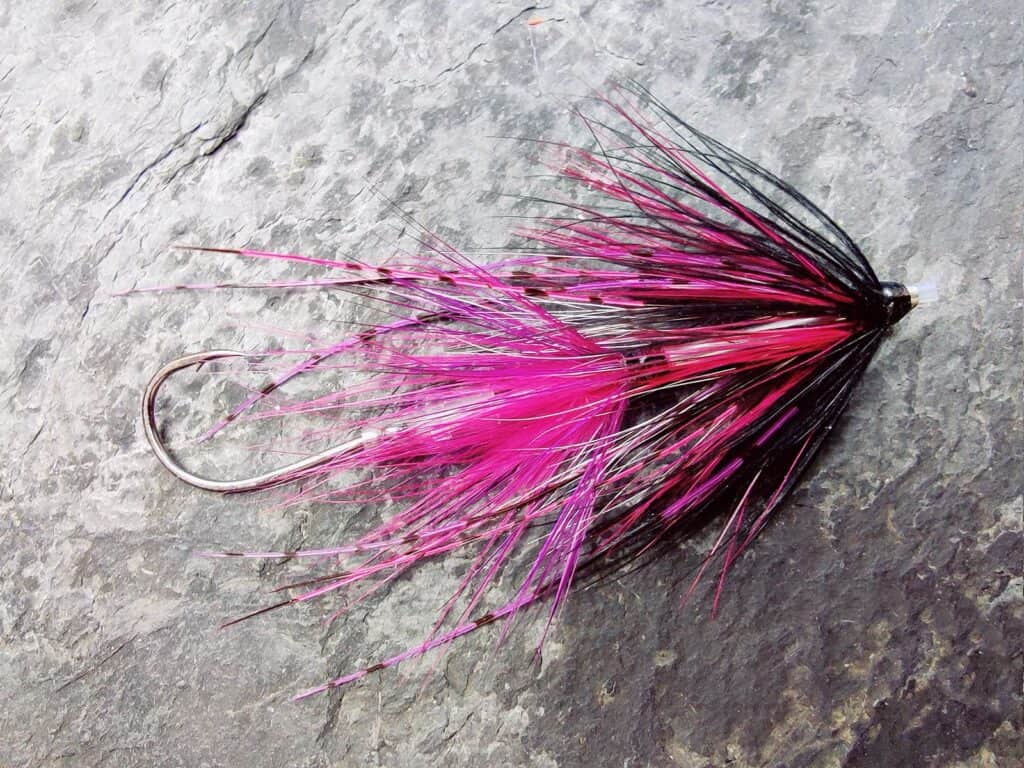
The materials in the examples illustrated have been tied in at two points or stations on the shank, one at the head and the other midway down the tube. The stainless steel body of the tube may be left undressed to create a slim, simply dressed fly, as shown in the tying of this simple Needle Tube Intruder Fly or the body may be dressed or partially dressed with tinsel, hackle or dubbing, providing some attractive additional flash and also giving some support to the hackles ….
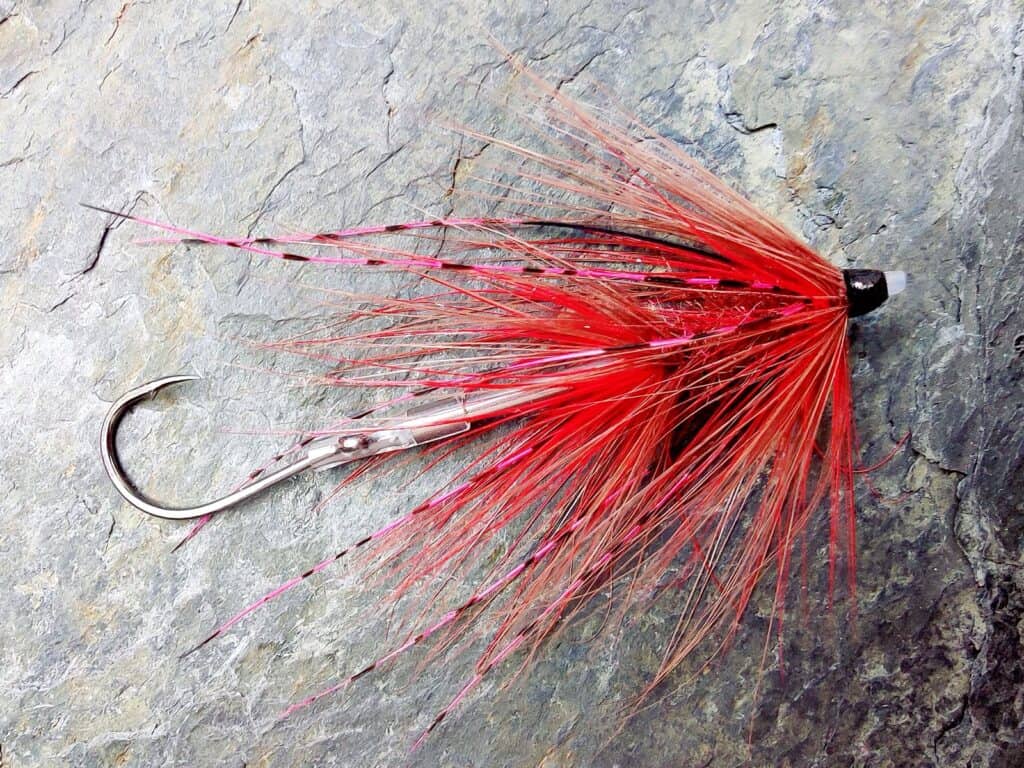
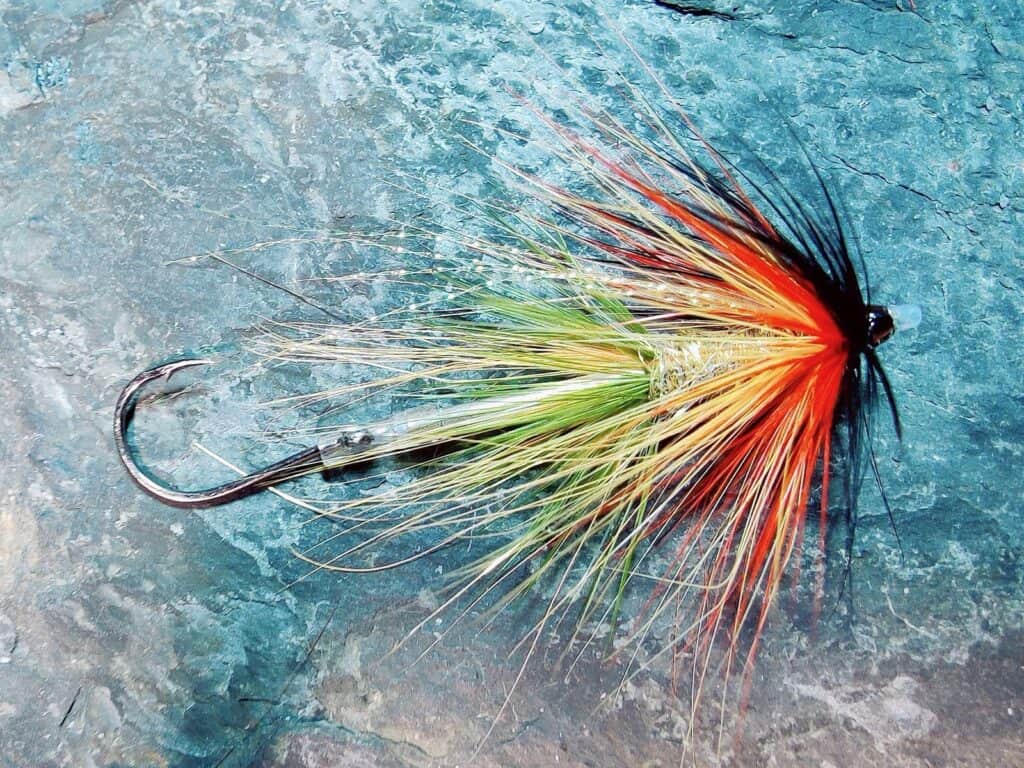
The “Mini Intruder” shown below also has a bit of flash dubbing added at the front of the tube. Dressed on a 25mm long Needle Tube, diameter 1.5mm, this creates a small (by North American standards) Intruder with a total length of one and a half inches (about 40mm), which would be suitable for fishing for Atlantic salmon, sea trout or Pacific Salmon and steelhead in summer or in low flows.
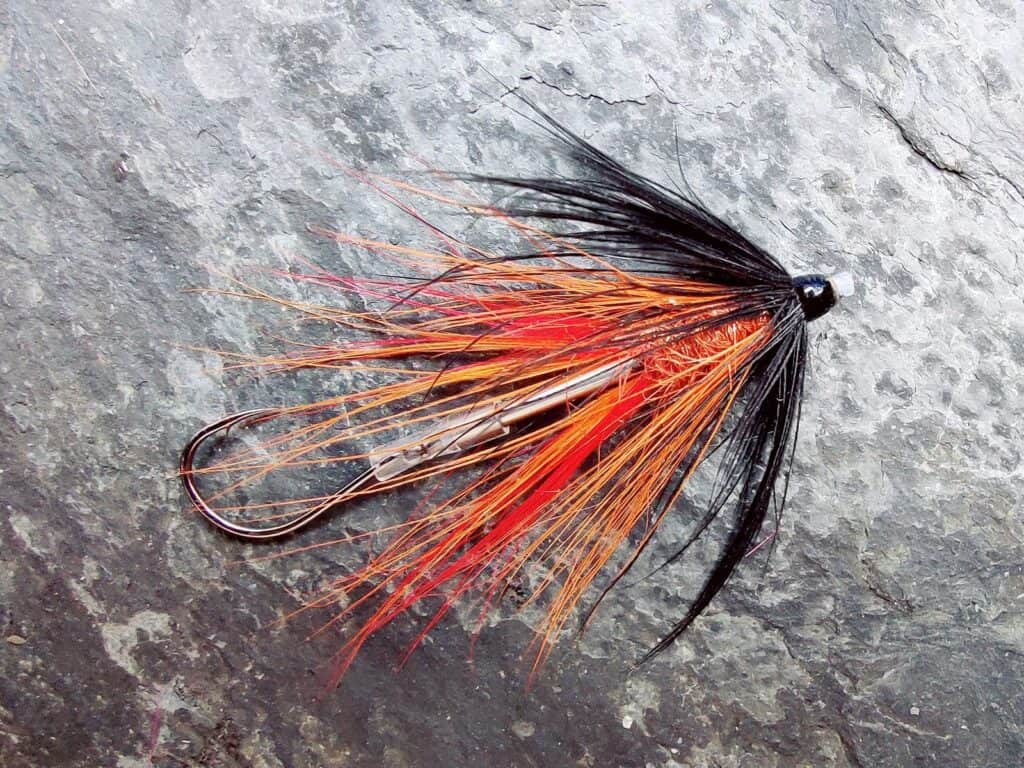
Shown below are a few more examples of Intruder style flies dressed on Needle Tubes. These tubes are 30 to 40mm long with an outside diameter of 1.5mm. The hooks are Kamasan B983 singles, either secured in PVC hook link or protected by a heat-shrink Knot Guard and allowed to swing freely. The overall length of these flies is about two and a half inches.
Note: The Intruder Tube Flies shown below have been dressed primarily with Pacific salmon and steelhead in mind. More modest dressings might be applied for Atlantic salmon and sea trout, as illustrated on the folowing pages:
Sea Trout Needle Tube Intruders
Intruder Tubes for Salmon and Steelhead
Note that a single or double undressed hook, if allowed to swim freely, will tend to swim naturally with hook points uppermost. This therefore is a sensible way to rig the hook if fitting in a short extension hook link tube. A free-swinging hook behind the tube will of course tend also to swim hook point up.
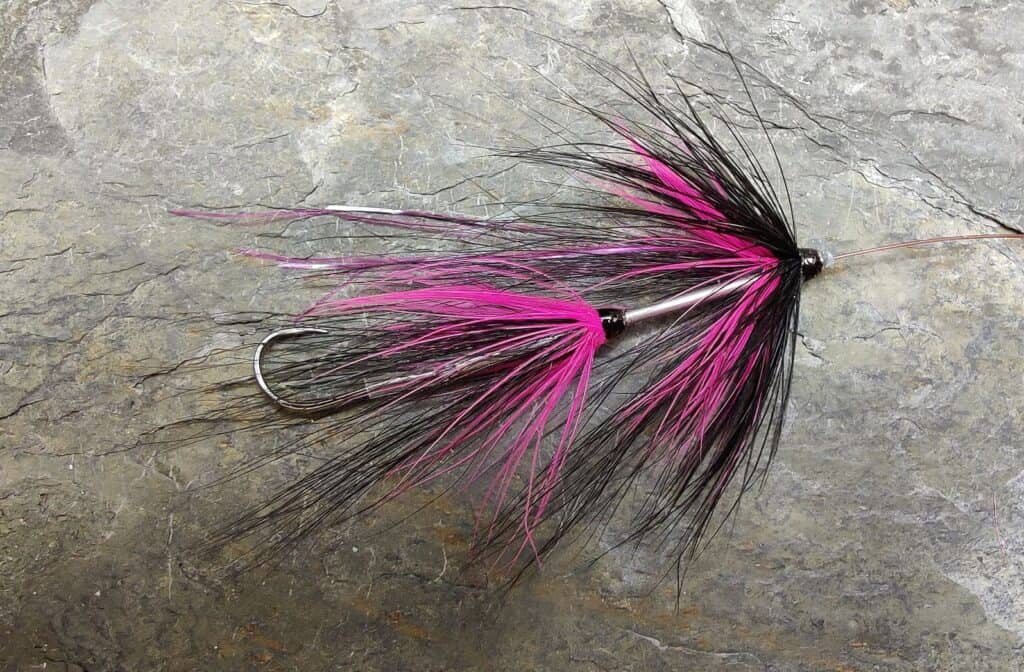
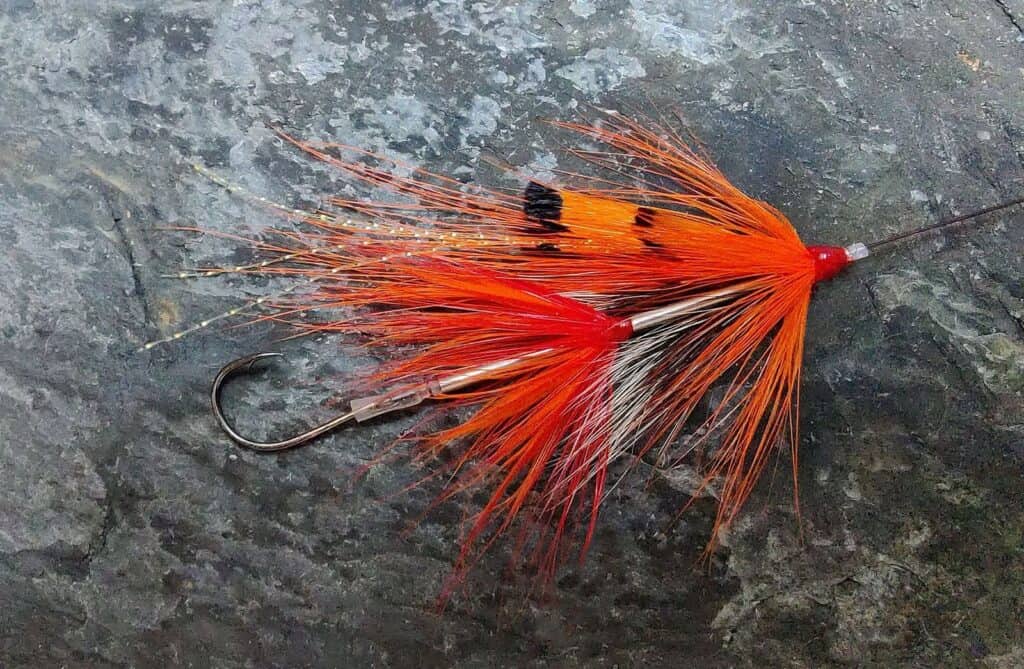
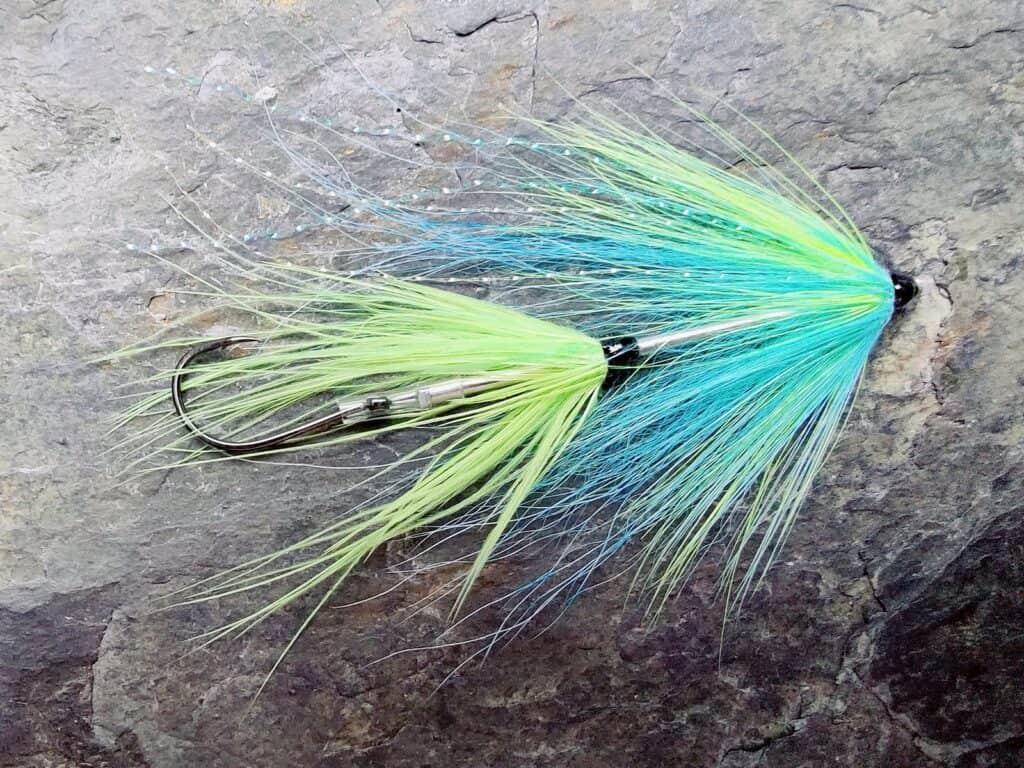
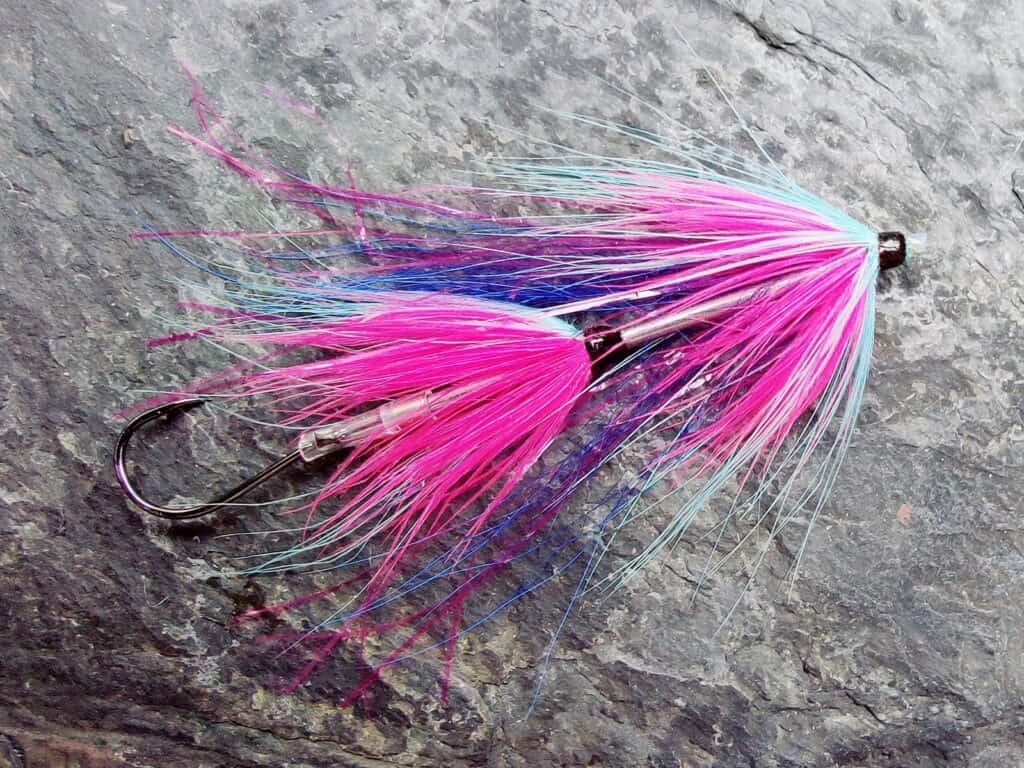
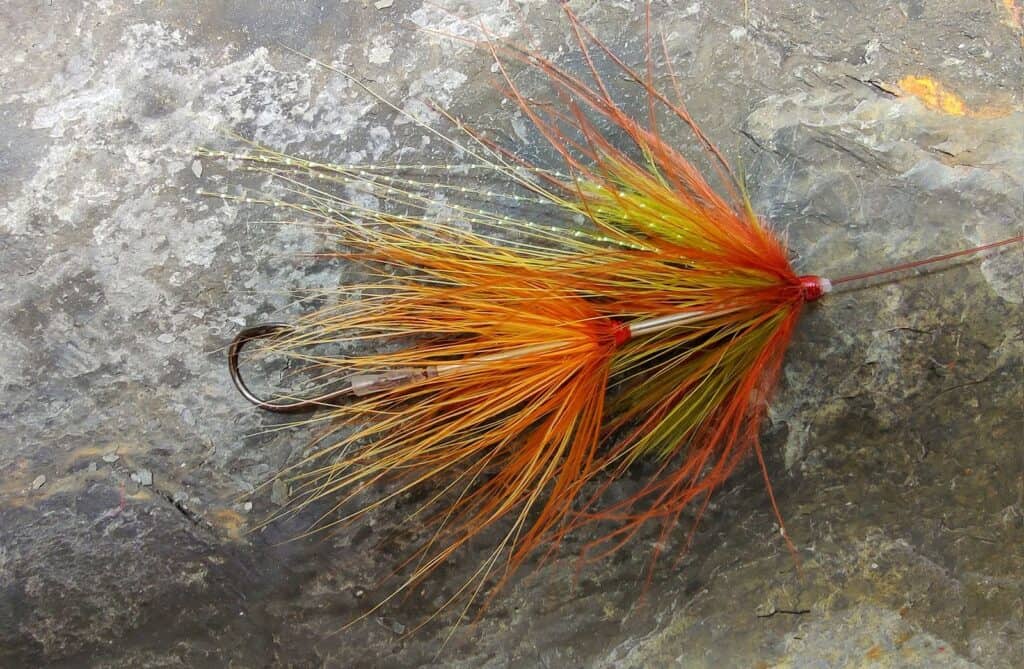
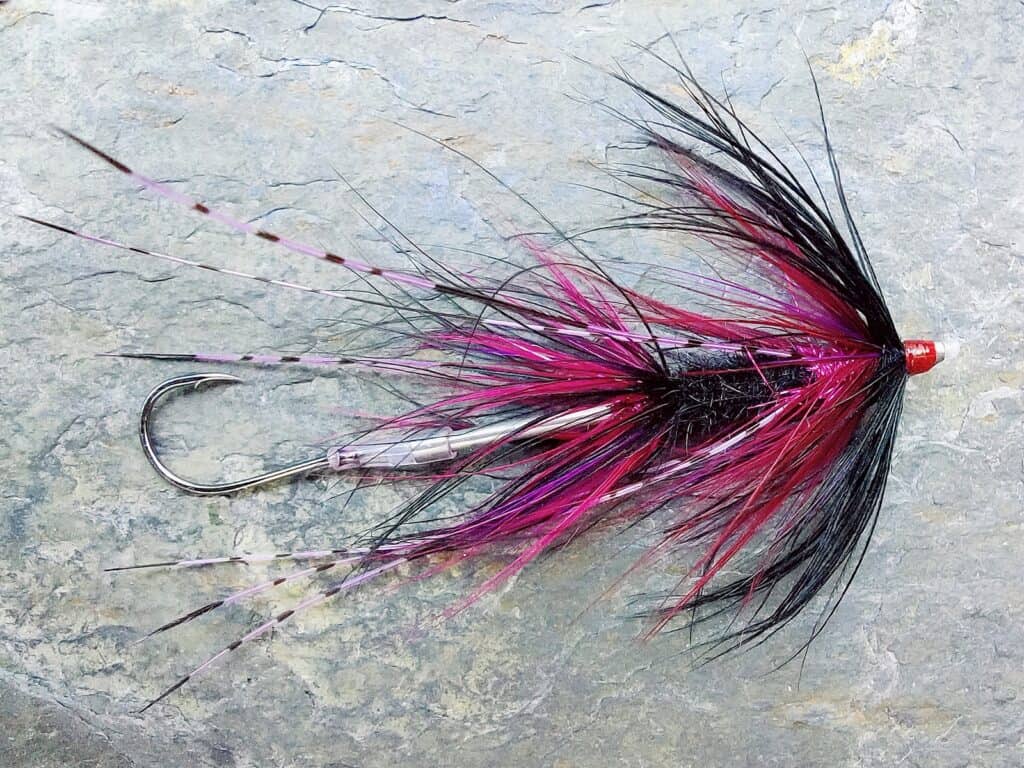
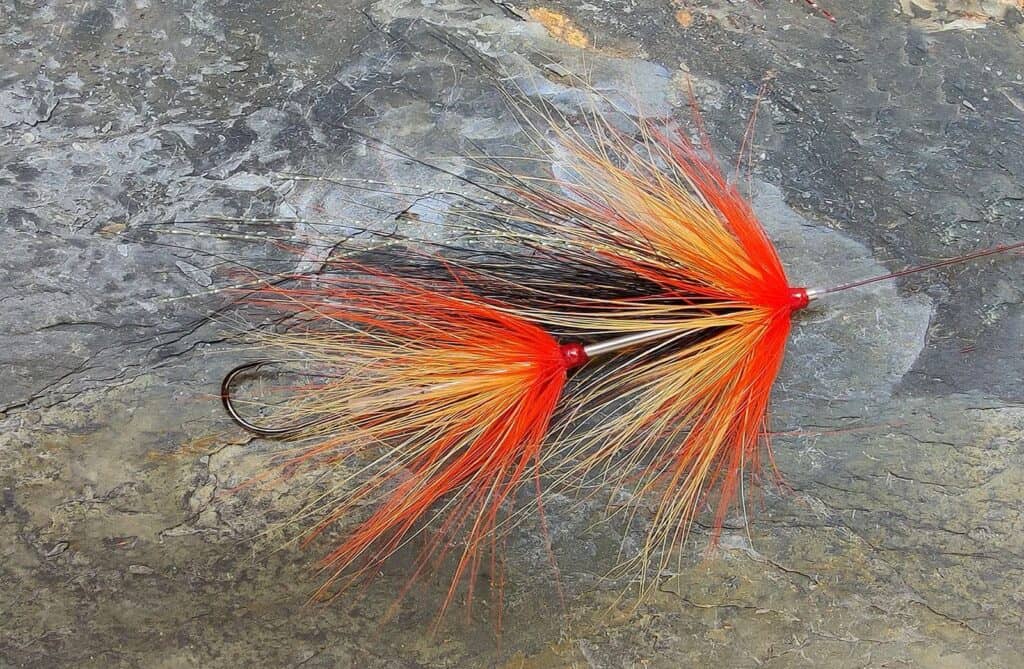
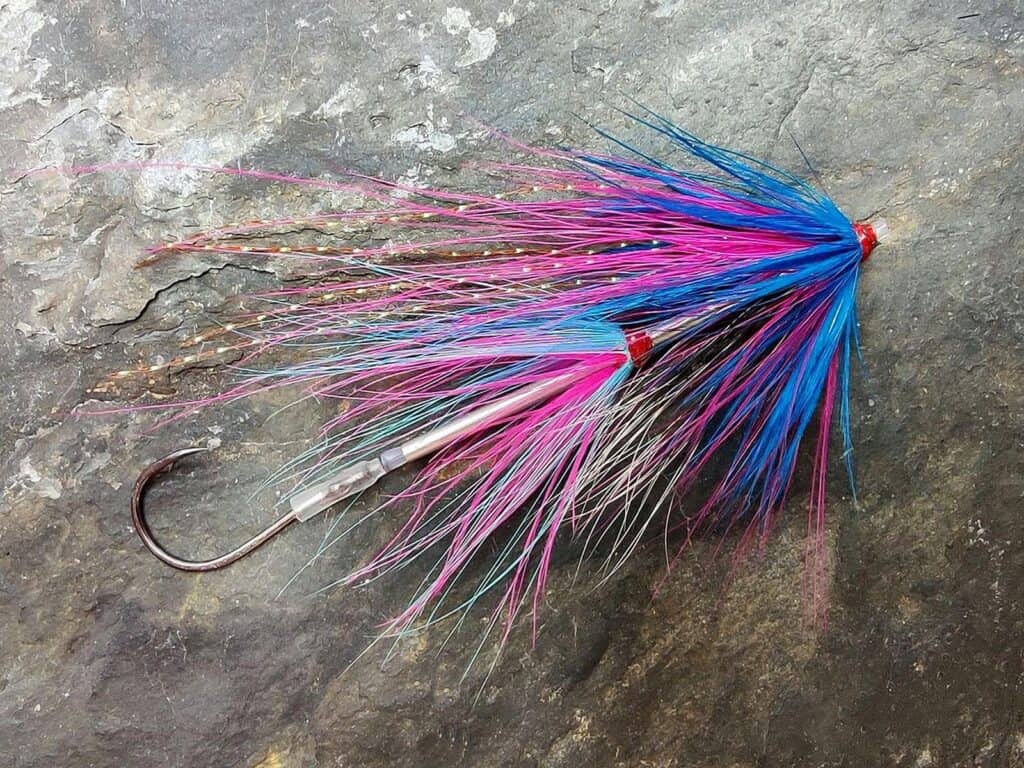
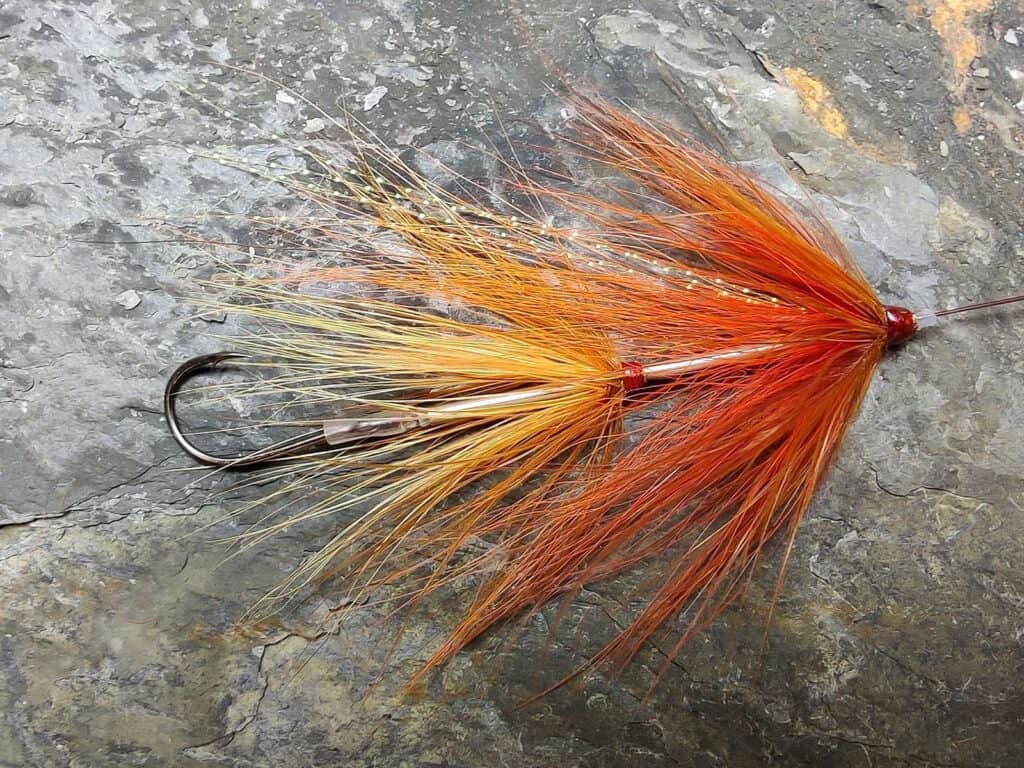
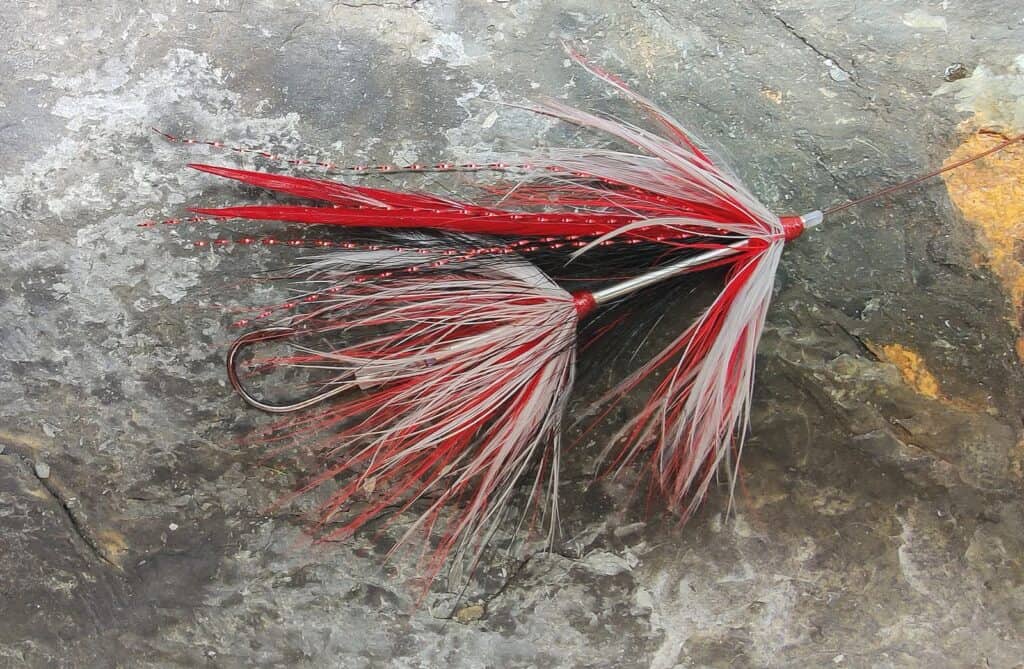
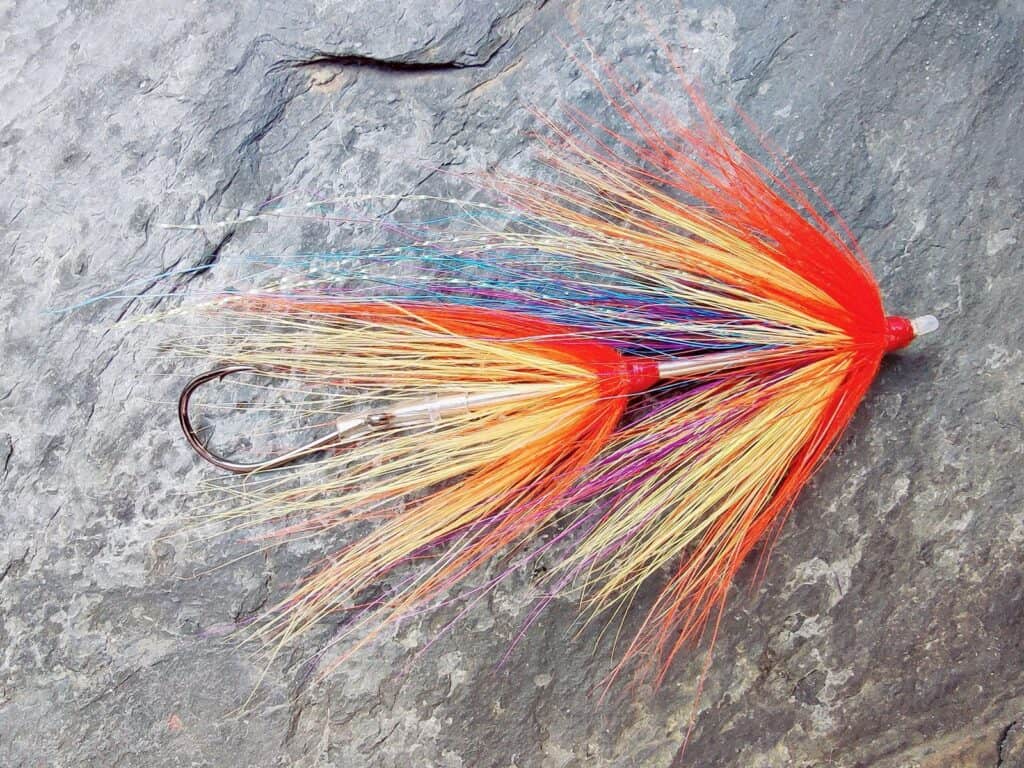
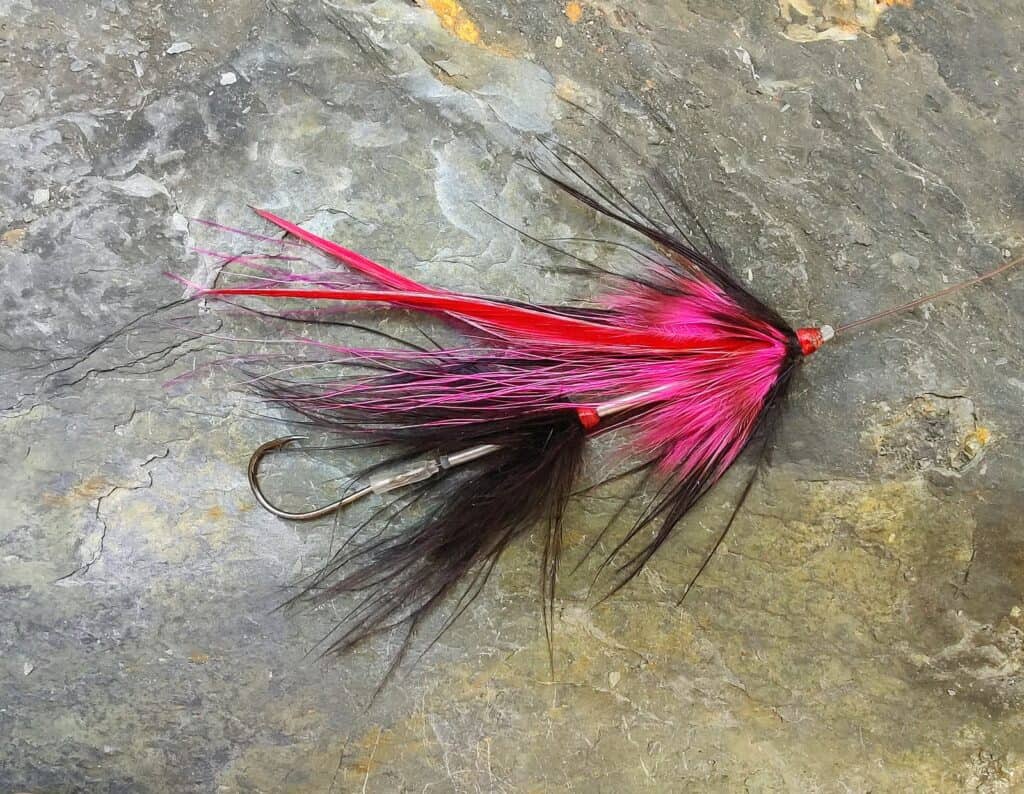
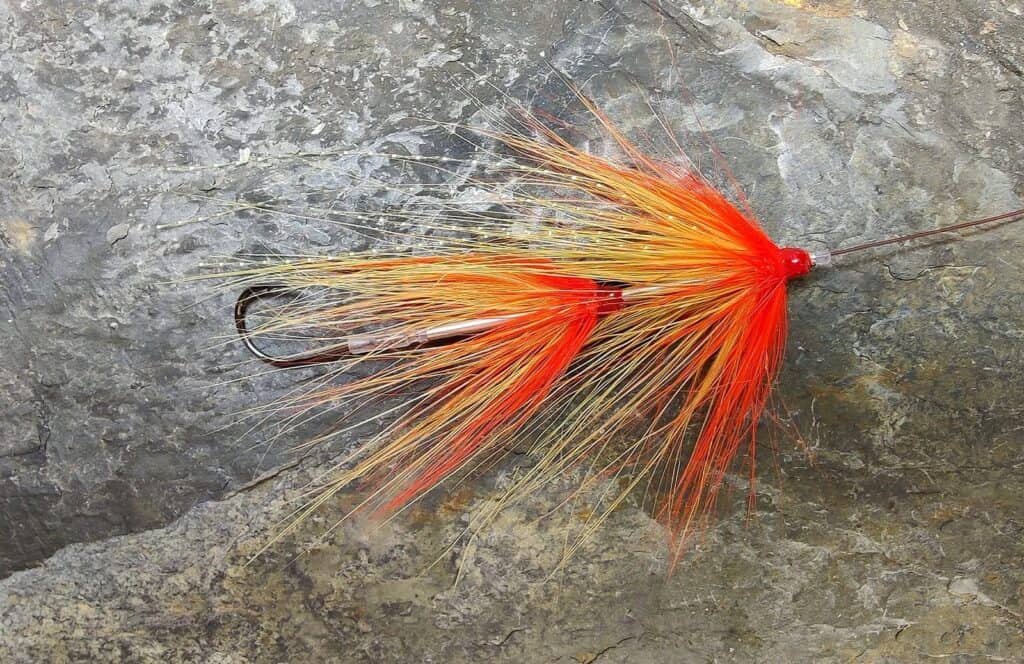
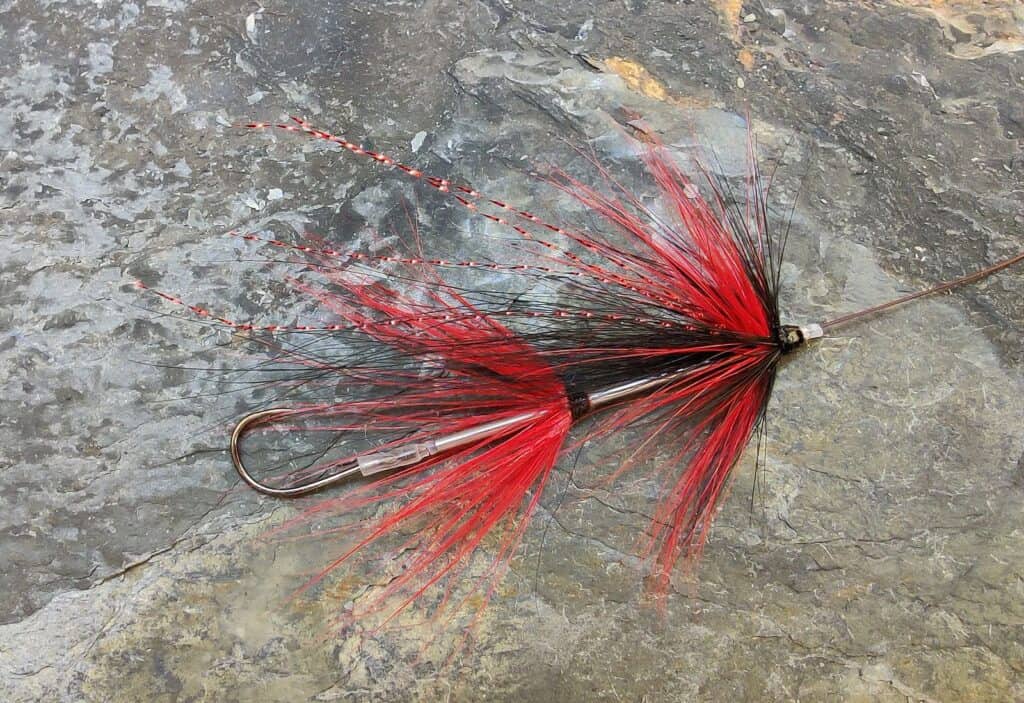
Rigging the Tube Hook
The hooks shown in the above examples are free-swinging hooks held in a heat-shrink Knot Guard. Alternative methods of attaching the tube fly hook are shown below.
Wee Intruder Needle Tube Flies
We might simplify the dressing further to create “Wee Intruders”, a shorter version of the above Intruder tubes. The tying is similar but omits the rear station dressing, creating a smaller overall fly, more suited to summer/low water conditions. Even smaller flies might be made by using shorter needle tubes, as in the Scottish Shrimp series, which have proven successful in recent seasons for salmon fishing on Vancouver Island.
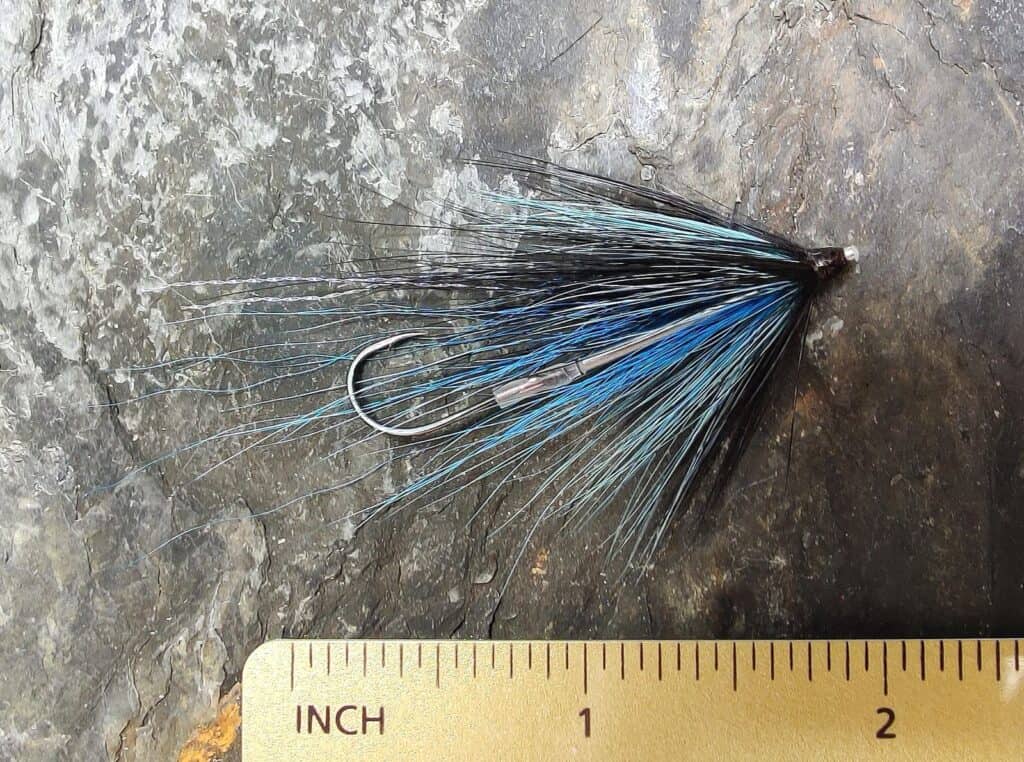
Note again that the free-swinging single hook will tend to swim naturally with hook points uppermost. This tendency allows the hook to be hidden to an extent in the fly dressing and reduces the chance of the hook point catching on riverbed rocks, weed or leaves in the autumn. If fitting the hook in a PVC or silicone extension, the hook should again be fitted with hook point uppermost. This will also help ensure that the fly swims as intended on an even keel.
Ilustrated below are a dozen more tube flies dressed in a simplified Intruder style on shorter Needle Tubes omitting the rear dressing of the flies above. These flies are fairly simply dressed with no dressing over the stainless tube, all materials being tied in close to the head of the tube fly. The flies illustrated below are tied on 25mm long tubes, 1.5mm diameter, with a total dressed length of between two inches and two and a half inches, so I suppose they might be considered a kind of “wee intruder”. They might, of course, be dressed on longer needle tubes, or tubes of other types, and fitted with larger hooks for winter fishing, or more sparsely dressed on shorter tubes for low, clear water. I have dressed the tubes in various combinations of colours, appealing to my own subjective eye. So, although on the small side for Intruders, I hope that they might be as intrusive as need be in colours which I hope might succeed in provoking that essential aggressive reaction from Pacific salmon and steelhead. They might also be effective for our Atlantic salmon too, being more akin to the European style and size of tube flies. The hooks in the examples illustrated are Kamasan B983 hooks, size 6. The hooks are allowed to swing freely, protected by heat shrink knot guards which are very easily and cheaply made at home. See Tube Fly Hooks. Alternatively, the hook may be attached in the more conventional way, held in place by a flexible silicone or PVC hook link.
Wee Intruders
These flies may be seen as much simplified Intruders, aiming to create a lure which will stimulate a similar aggressive reaction in the fish. The dressing of these short or “Wee Intruders” is about as simple as it gets! They have no rear dressing. They have no body dressing. All materials (consisting minimally of two colours of bucktail and two coloured hackles) are tied in at the head of the fly, on a short thread base of less than one centimeter. The dressing consists essentially of:
- A long tail of bucktail, with a few strands of flash
- A bucktail wing shorter than the tail in a complimentray or contrasting colour
- A sparse bucktail underbelly about the same length as the wing
- Two collar hackles of complimentary or contrasting colours (occasionallly only a single hackle)
They are, in fact, dressed in the same style as Scottish Shrimp Tube Flies, but on a slightly larger scale.
Tap or click images to enlarge
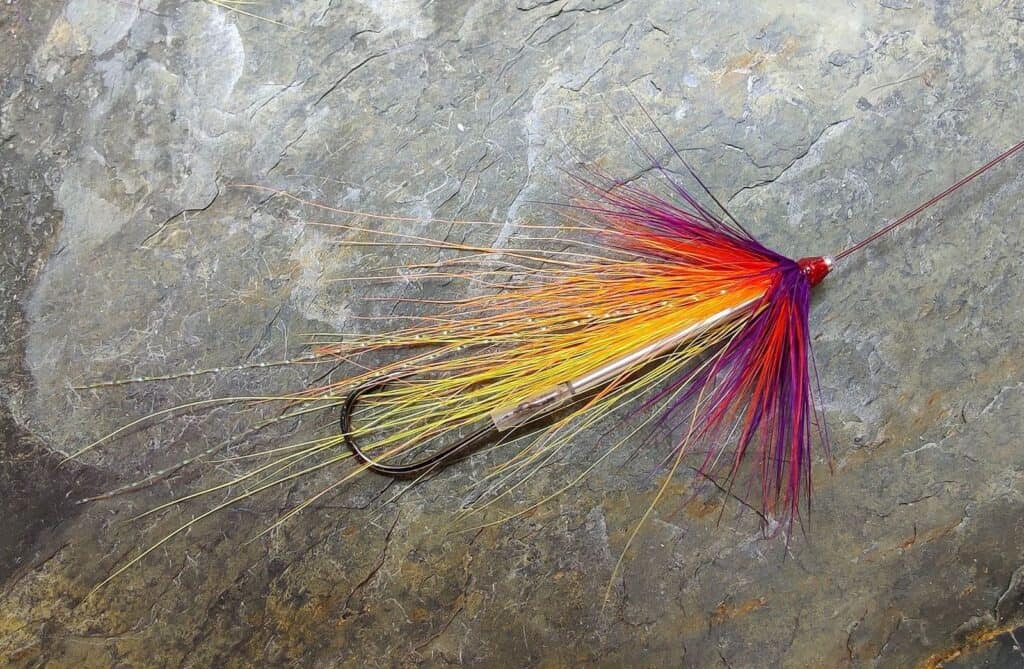
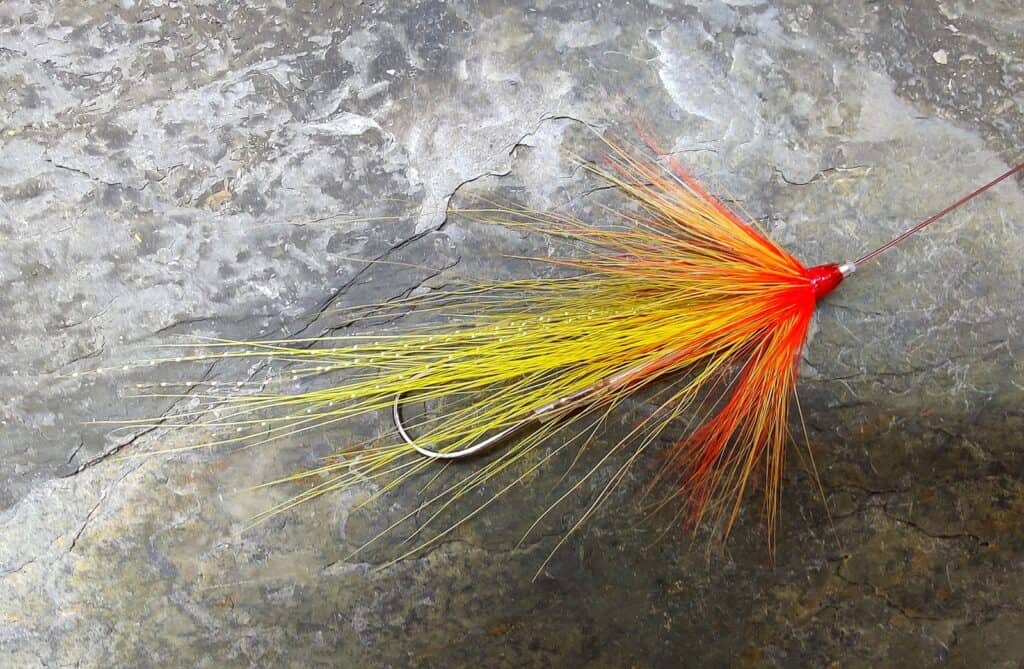
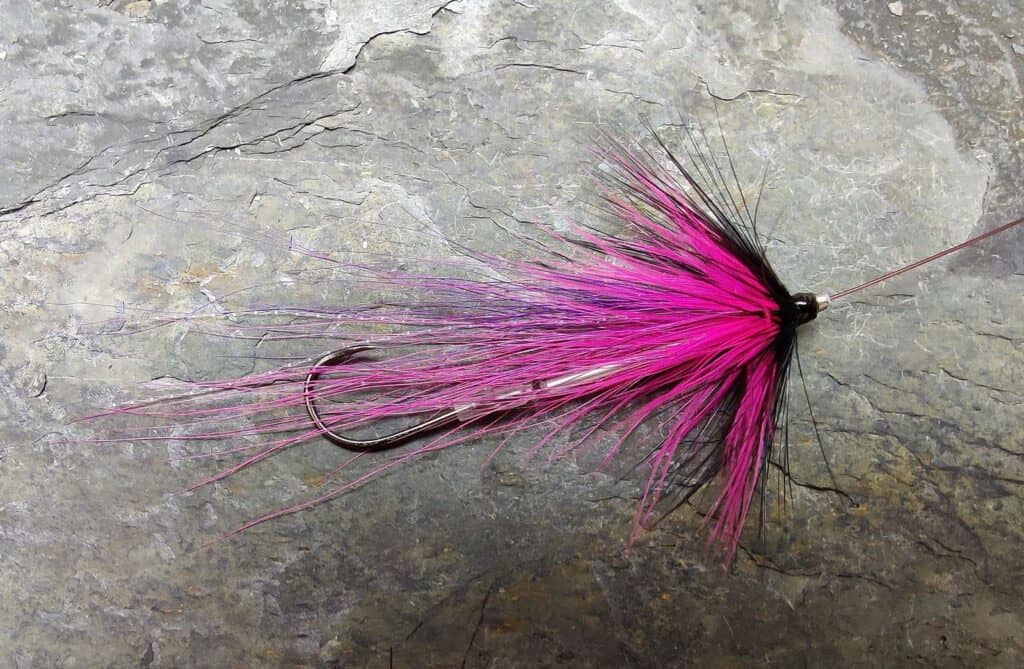
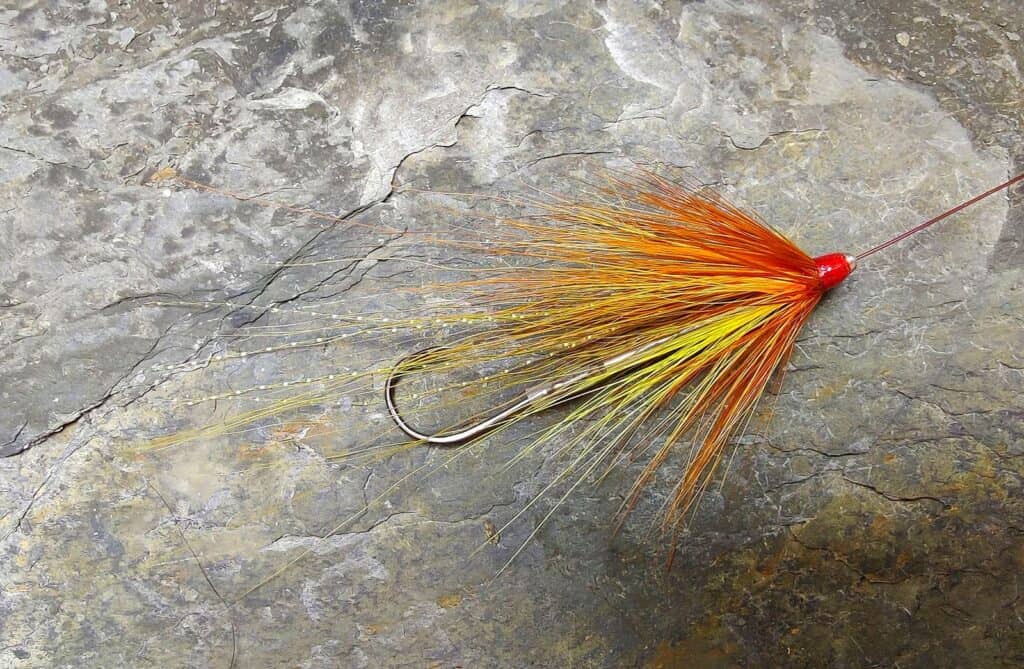
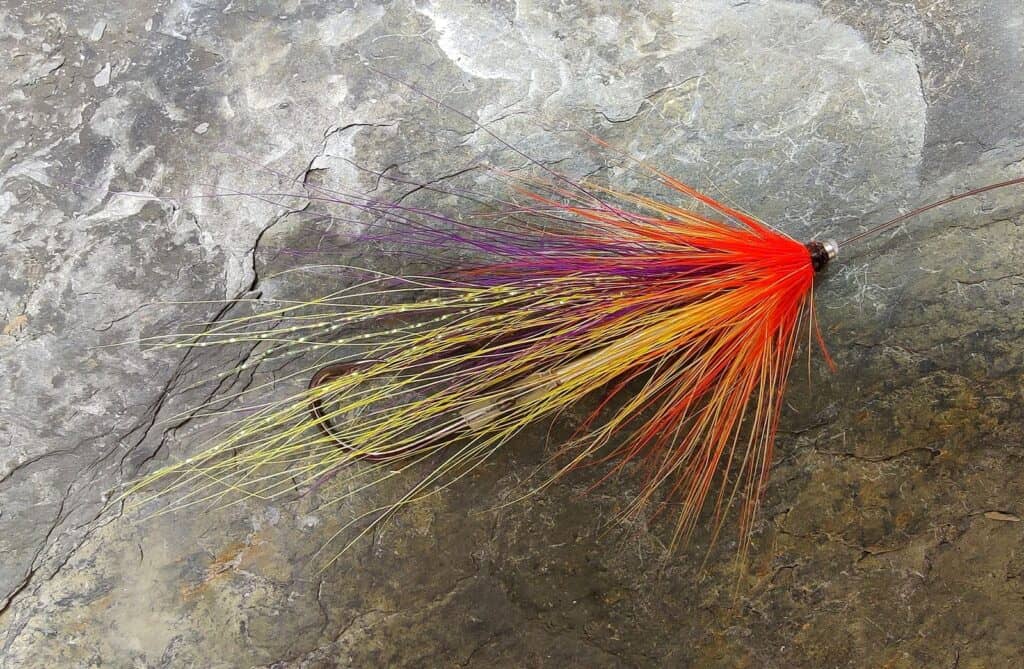
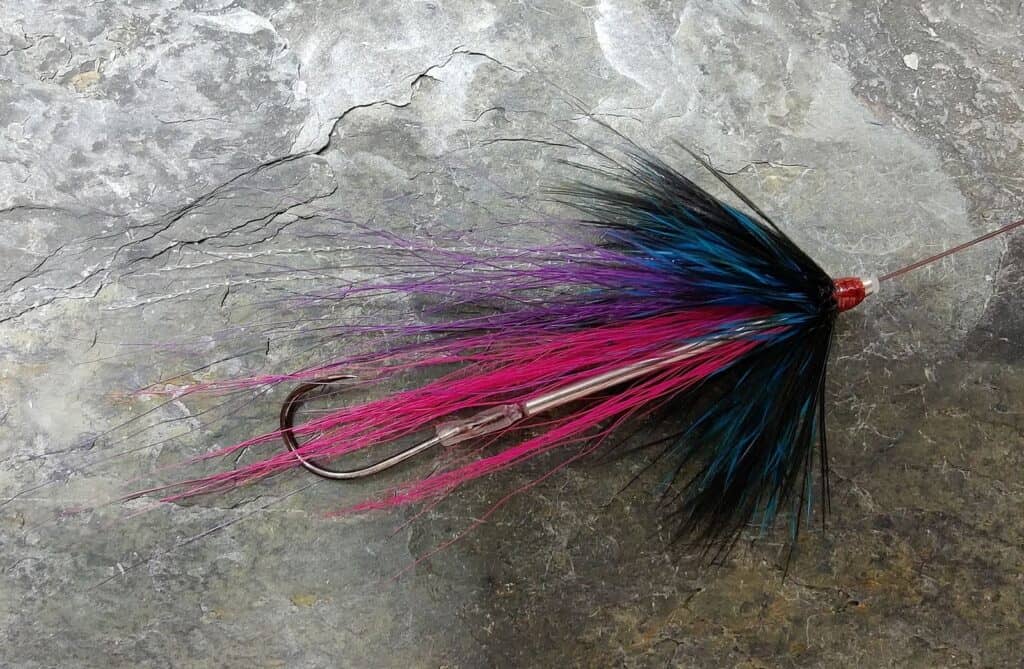
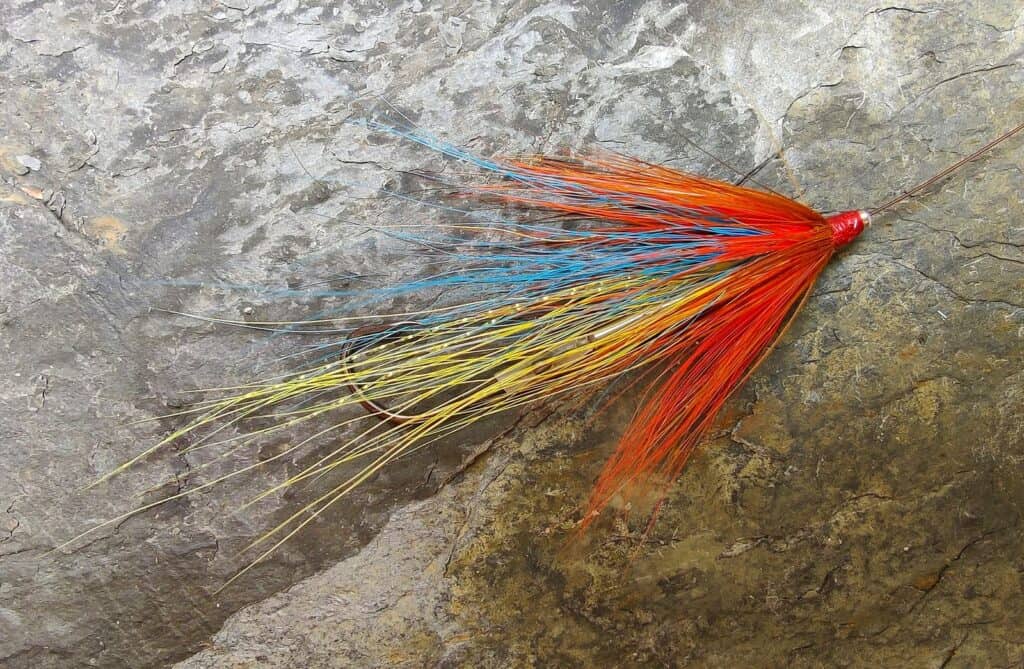
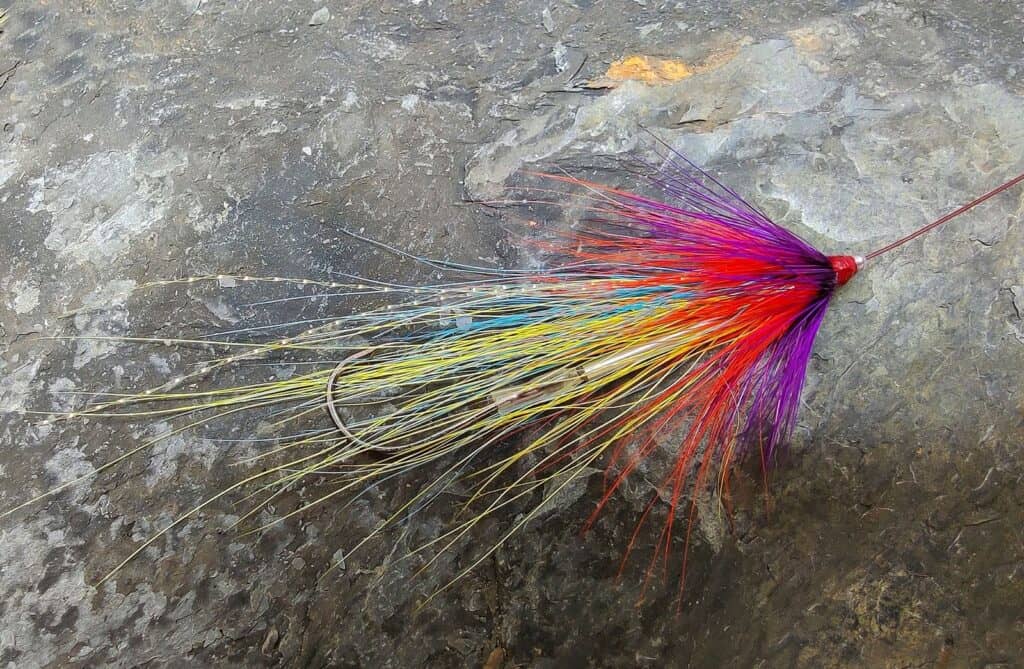
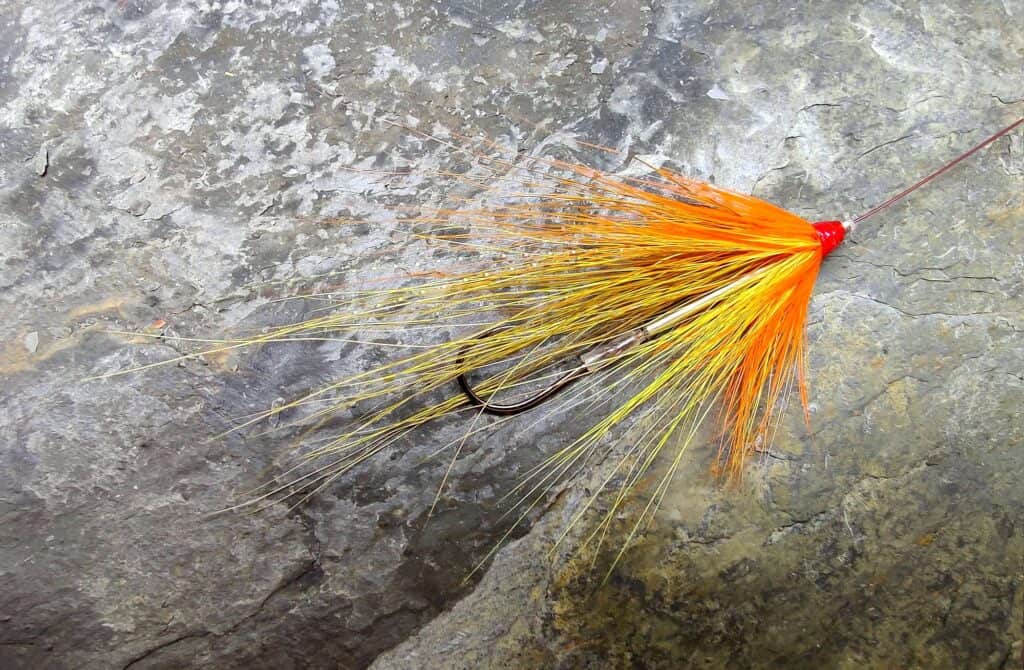
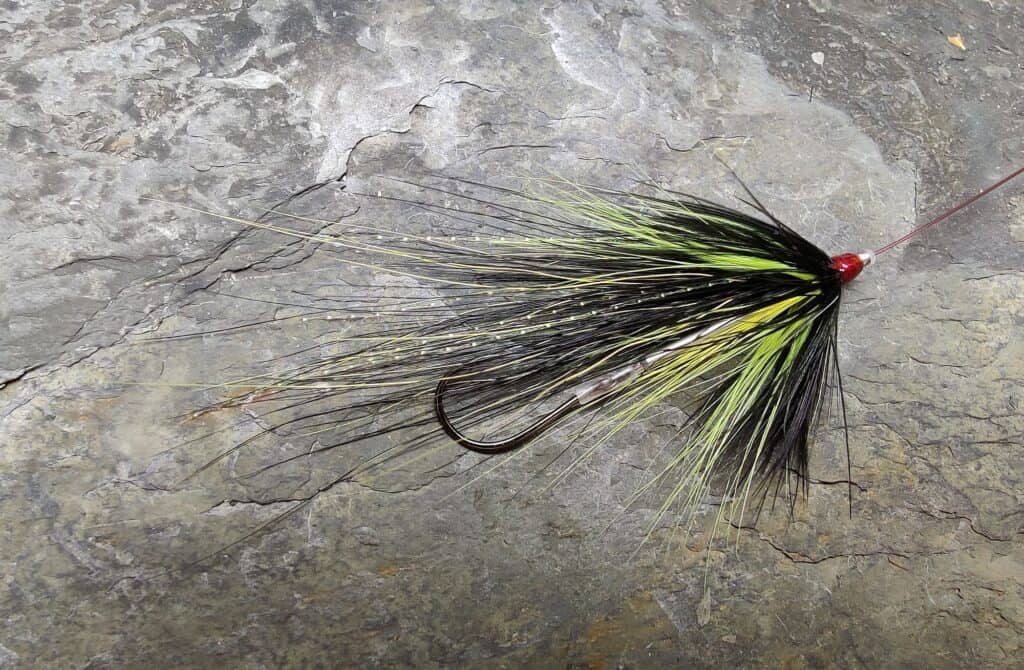
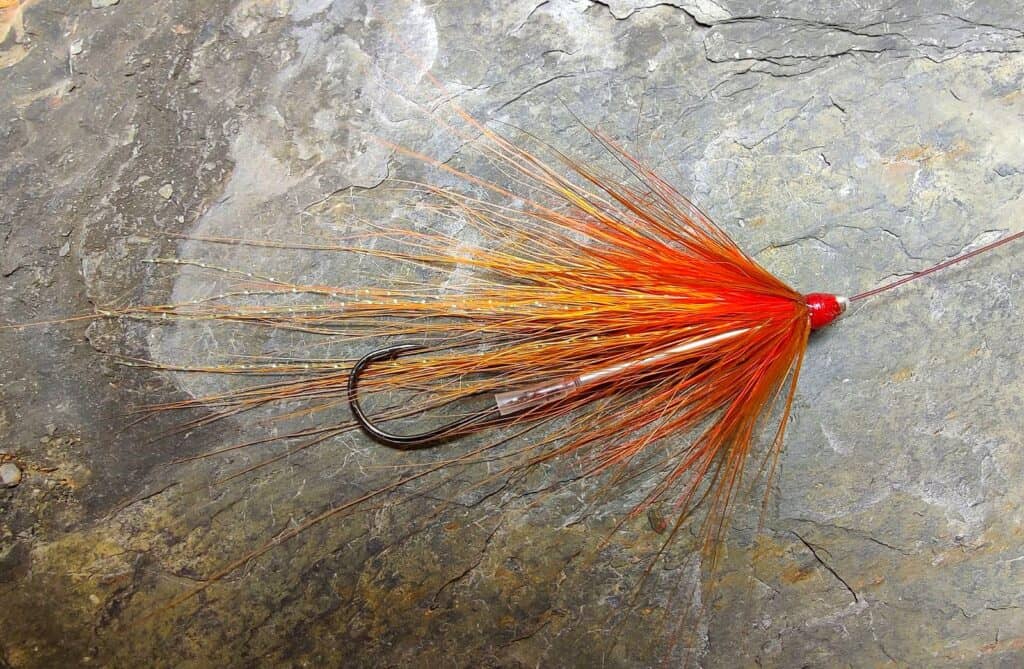
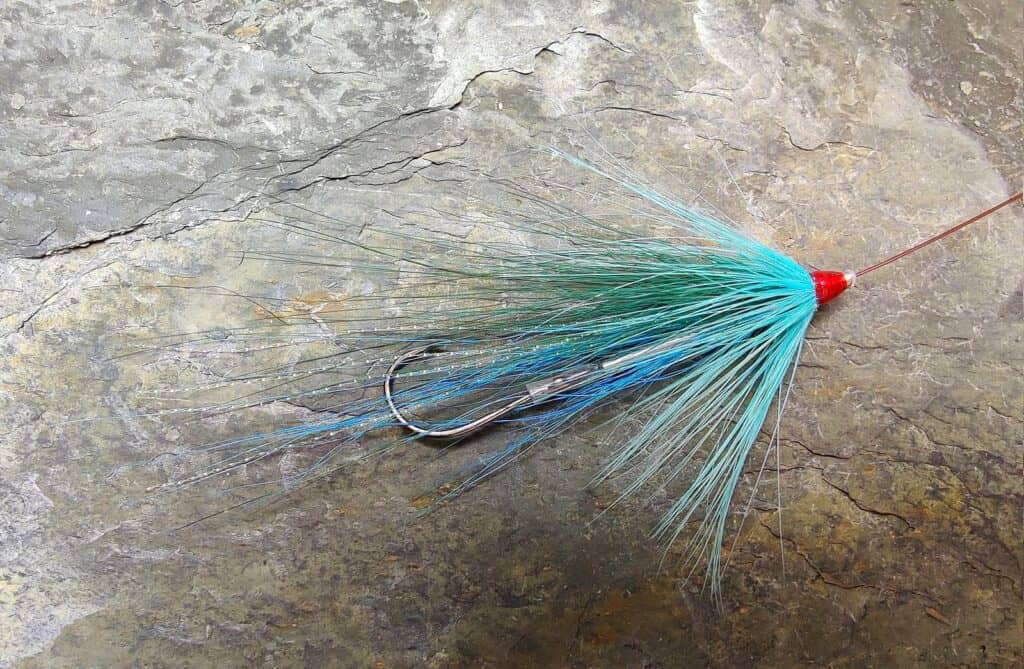
The flies above perhaps stray a little from the rich tradition of North American Intruder fly dressing but I think that they fit the criteria of the originators – 50 to 60 mm long, highly visible and intrusive. The salmon and steelhead may or may not ignore them but they are likely to have little difficulty in seeing them! The dressings may be varied according to the taste and fishing requirements of the tyer to create an infinite range of Intruder style dressings, old and new!
Extending the Intruder Tube Fly
As explained above, these Wee Intruder tube flies are on the small side as Intruders go, i.e. about 2 to 2.5 inches long. Intruders for winter fishing can be anything up to six inches in length. As illustrated in the intoduction at the top of the page, it is easy enough to dress a larger Intruder tube fly using a longer tube, for example a 40mm long needle tube, as a base with a longer dressing applied. However, we might find ourselves fishing with the shorter tube flies shown here, but, perhaps through a change of conditions or a move to a different stretch of river, want to change to a longer fly, or maybe add abit of extra colour. In such a situation, it is perfectly feasible to extend the length of our tubes by the simple addition of an extender tube. The extender tube could be dressed to complement, or contrast, the colours of the tube fly, as in the example below, where the main tube fly is dressed on a 25mm long needle tube, with a simple dressing applied to the extender tube, in this case a needle tube 15mm in length.
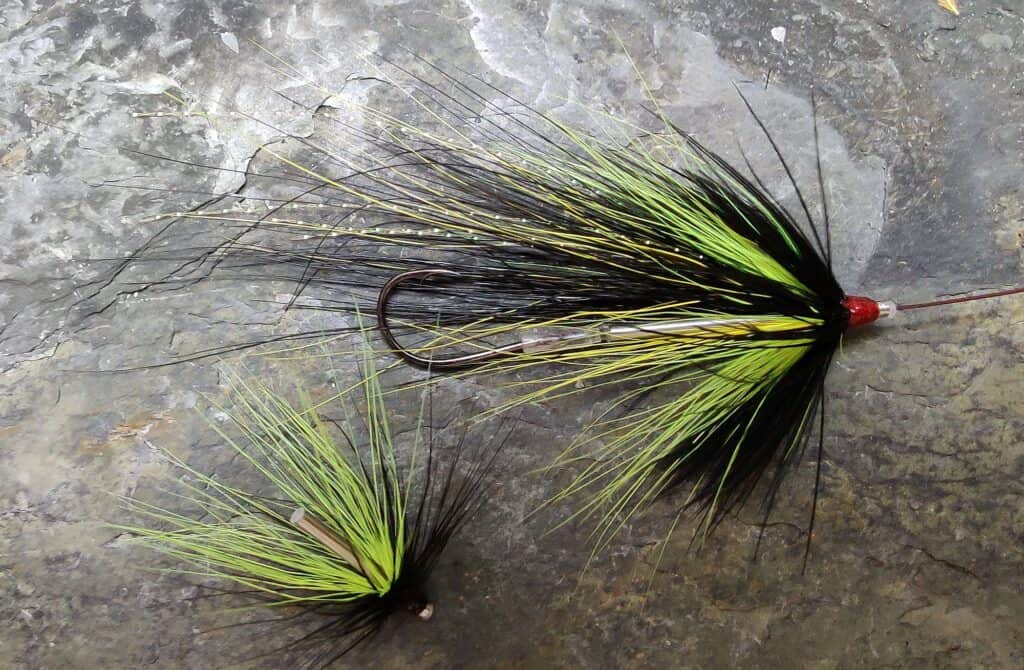
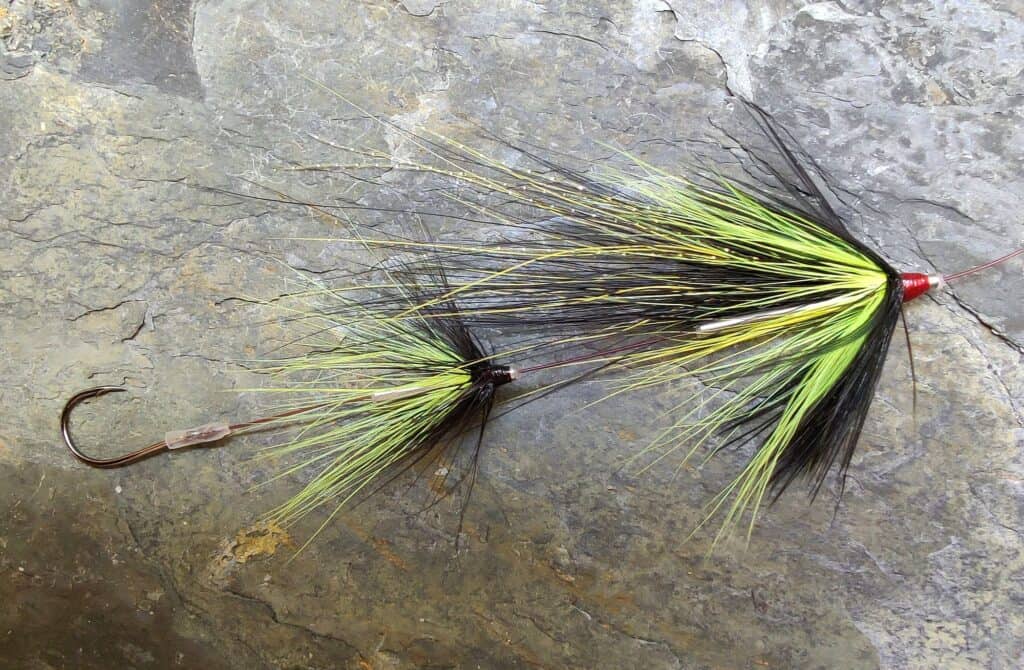
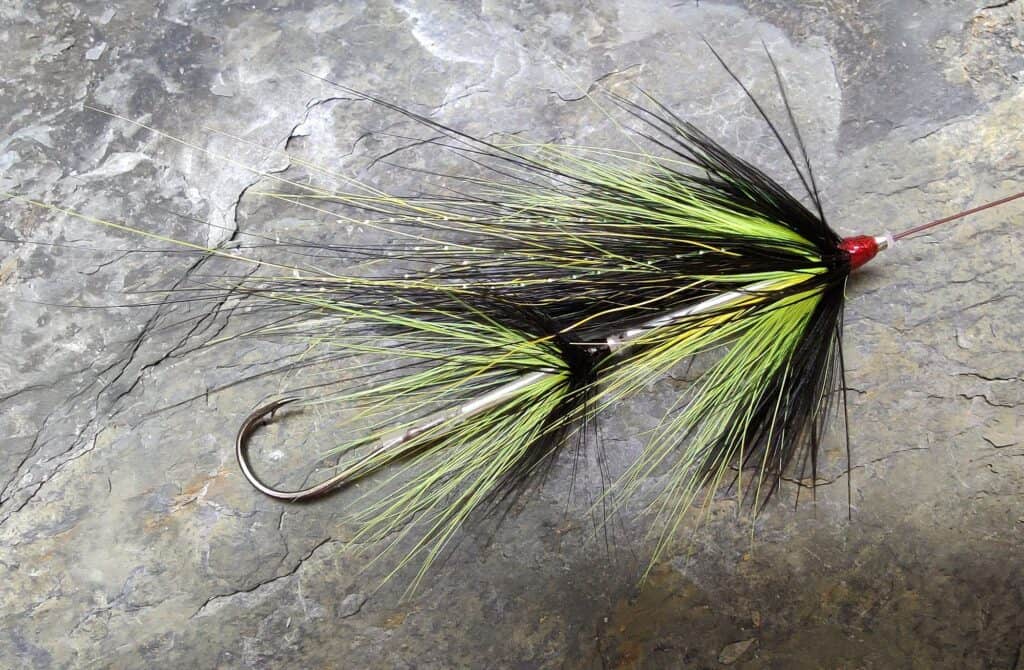
Using this method of connecting tubes in tandem, with a suitable selection of different length extension tubes we are able to adapt our flies quite easily to changing circumstance. Or we might arrive at the river to find it running a little higher and faster than we had expected. The extender tubes might then be added to either the front or the rear of the main tube as desired. No need to join the tubes together. The force of the river current will ensure that they fish together, just as the free-swinging hook will butt up against the rear of the tube combination. In this way we might get greater use from out tube flies. The articulated tube combination might even add a bit more mobility and action to the fly.
Taking the idea a little further, together with out tube flies we might carry a selection of extender tubes dressed in a range of lengths and colour combinations, creating a wide range of what we might call Twin Tube Intruders. This would allow us to alter the appearance of our Intruder tube flies, perhaps quite dramatically, simply by the addition of an extender tube in a different colour. On the fly above, for example, we might perhaps add an extender tube dressed with a blue hackle.
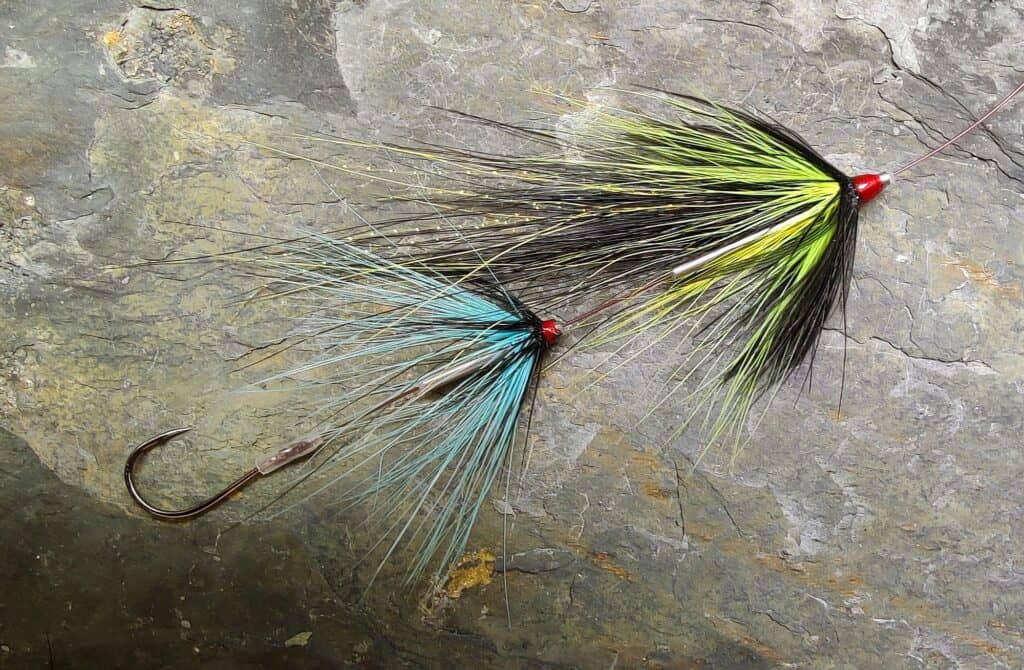
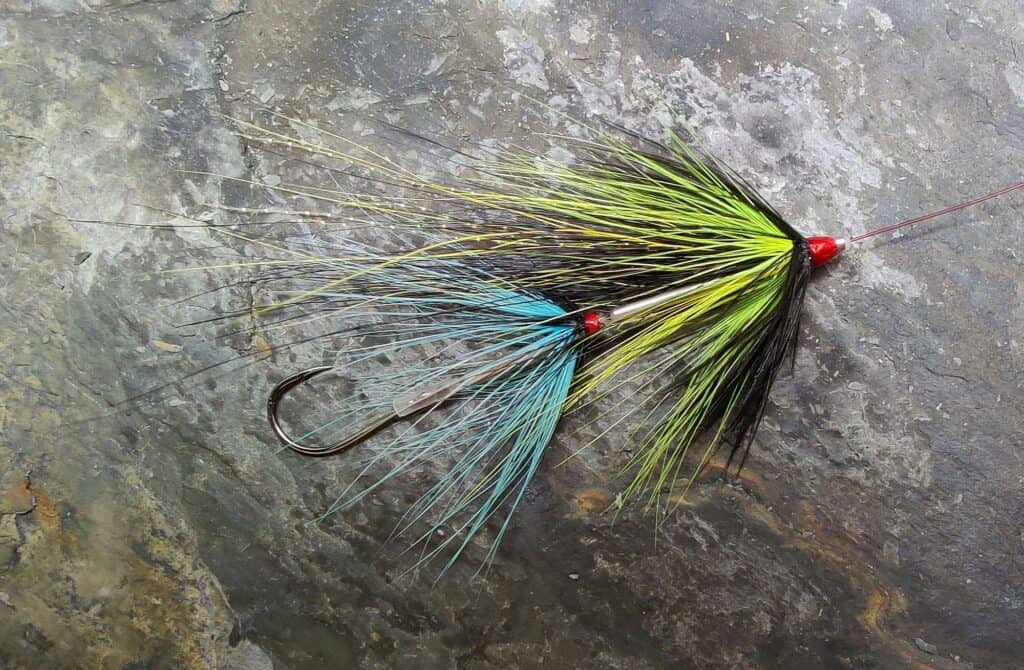
Or how about a Pink and Blue Intruder Combination …
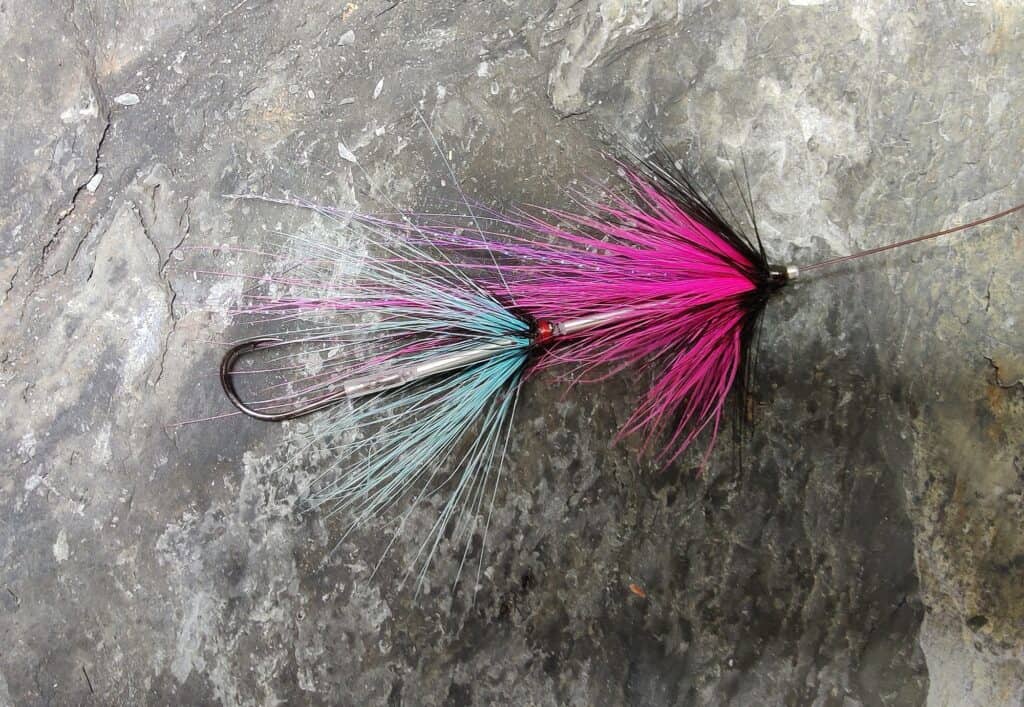
To extend the Intruder Tube Fly to an even greater length, you might really go to town by adding a second extender tube, either dressed or undressed. The possibilities are endless!
See also
